
Weird vintage car accessories you won't see today
Content
- Convertible Vinyl Car Cover
- Turntables in cars were a thing
- If you don't have a garage, get a folding garage
- The radiator shutter will heat up the engine faster
- External sun visors were mostly used in the 50s and 60s
- Fancy tissue box
- 8-track player mounted in the back seat
- The GM hatchback tent was introduced as more Americans went camping
- Picnics were popular
- The Pontiac Ventura had a vinyl folding sunroof.
- Car vacuum cleaners are sold with your car
- Some Pontiac models from the 50s were produced with a Remington electric razor
- Before the advent of grip and heating, driving gloves were common.
- Motorists could buy extra dials to crash into their dashboard
- Sports transistor AM radio
- Pontiac's Instant Air Pump Can Fill Your Bike Tires
- Mini table for your front seat
- First there was a car radio
- Inflatable seat cushions for long trips and sleep
- Car seats didn't support so there was this
- 1896 – Quadricycle
- 1899 - Detroit Automobile Company
- 1901 - Duel
- 1902 - «Monster»
- 1903 - Ford Motor Company Inc.
- 1904 Ford Canada opens
- 1907 - The famous Ford logo
- 1908 - Popular Model T
- 1909 – Founding of Ford of Britain.
- 1913 - Moving assembly line
- 1914 - $5 Labor Day
- 1917 - River Rouge Complex
- 1917 - First Ford truck
- 1918—World War I
- 1922 - Ford buys Lincoln
- 1925 - Ford makes airplanes
- 1925 - 15 million Model T
- 1927 - Ford Model A
- 1928 Ford founds Fordland.
- 1932 - Flat V8 engine
- 1938 - Ford creates the Mercury brand
- 1941 - Ford builds jeeps
- 1942 - Refitting for war
- 1942 - Lindbergh and Rosie
- 1948 Ford F-series pickup
- 1954 – Ford Thunderbird
- 1954 - Ford begins crash testing
- 1956 - Ford Motor Company goes public
- 1957 - Ford introduces the Edsel brand
- 1963 - Ford tries to buy a Ferrari
- 1964 - Iconic Ford Mustang
- 1964 - Ford GT40 debut at Le Mans
- 1965 - "Ford and the Race to the Moon"
- 1966 - Ford wins at Le Mans
- 1978 - "The Incredible Exploding Pinto"
- 1985 - Ford Taurus changes the industry
- 1987 - Ford buys Aston-Martin Lagonda
- 1989 - Ford buys Jaguar
- 1990 - Ford Explorer
- 2003 - Ford celebrates 100 years
Automobiles have come a long way in innovation and design over the past 70 years. Cars today are equipped with features that we could not have imagined in the 1960s and 70s. At that time, automakers began to develop concepts for car accessories that would appeal to the consumer. Not everything made practical sense, like the mini-table that folded out in the front seat. But you have to give General Motors and other automakers credit for thinking out of the box with these vintage car accessories that you will never see in cars today.
Convertible Vinyl Car Cover
This vinyl trunk lid appeared as an option on General Motors convertibles for several years in the 1960s. It has been designed to protect the car's interior from dust and sunlight while the driver is behind the wheel.

The lid was held in place by latches connecting the lid to the various corners of the convertible. The driver's side could be split by unzipping. It's not hard to see why this car accessory option didn't continue.
Turntables in cars were a thing
In addition to radio, automakers in the 1950s thought that drivers might want to listen to their favorite records while driving. This concept has not been fully thought through.

Car players were limited to 45 rpm singles and needed to be turned over every three minutes to continue listening. This trend of car accessories was short-lived in the US but continued in Europe until the 1960s.
If you don't have a garage, get a folding garage
In the 50s and 60s, some motorists decided to buy a folding garage to cover and protect their car close to home. At that time, not many people had garages, and this was a way to keep their valuable cars in good condition.
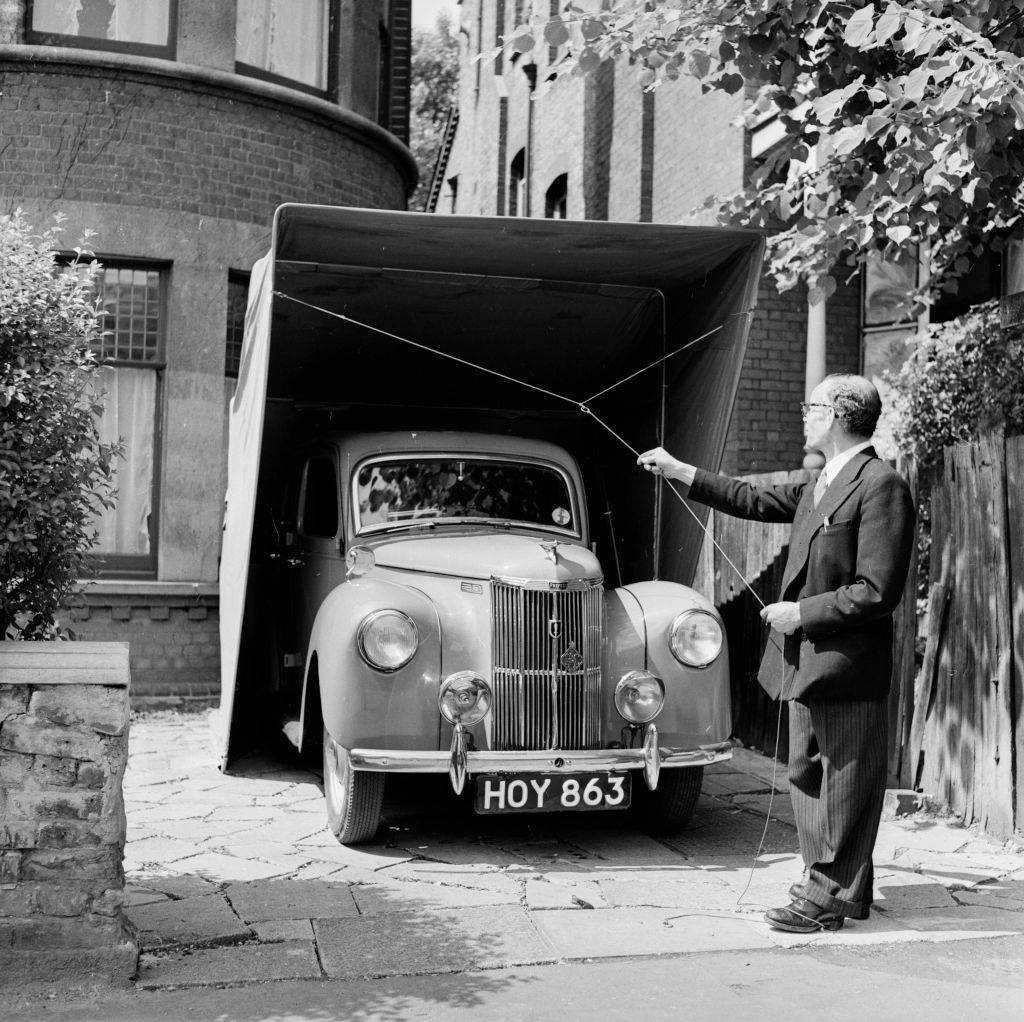
FT Keable & Sons has developed a "waterproof, lightweight and easy to carry" portable garage, according to their vintage ad. It was designed in seven different sizes and was so simple that "even a child could operate it!"
The radiator shutter will heat up the engine faster
It's unbelievable how far we've come in car design since the 50s! Before fuel injection and thermostatic fans, cars took a long time to warm up during the colder months.

Aircon designed this radiator shutter to help keep the car engine warm and warm up faster. Users attached the part to the car's grille and removed it in the summer. Aren't you glad we don't need them anymore?
External sun visors were mostly used in the 50s and 60s
Almost every car today is equipped with interior sun visors that the driver and front passenger can pull down to keep out the sun. But as early as 1939, automakers were developing sun visors for cars and trucks. Some drivers also referred to them as "canopies".
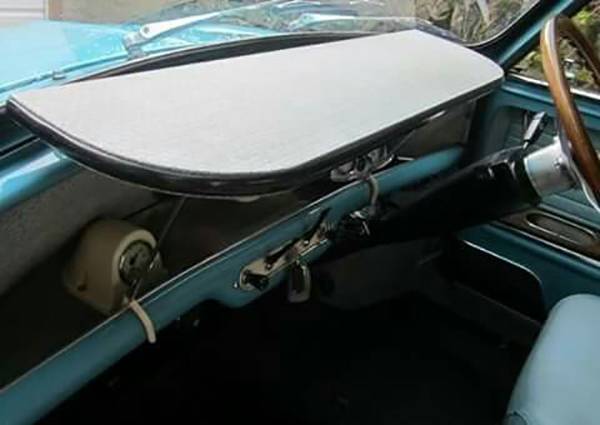
Visors have been an optional extra for several car brands including Ford and Vauxhall. Today, many classic car owners wear this accessory for style.
Fancy tissue box
General Motors started looking at other accessories they could include in their vehicles to make drivers more comfortable. In the mid-1970s, some Pontiac and Chevrolet vehicles had a tissue dispenser as an accessory.

But it wasn't just a box of tissues. Designed in multiple styles, these tissue boxes have been crafted from aluminum with the automaker's emblem to maintain the integrity of the car's interior design.
8-track player mounted in the back seat
Imagine having to reach into the back seat to change the radio volume or station in your car. It is almost impossible to do this while driving. You would have to take one hand off the steering wheel, stretch your arm straight back and blindly try to navigate the dials. General Motors skipped this car accessory option, which was offered from 1969–72.
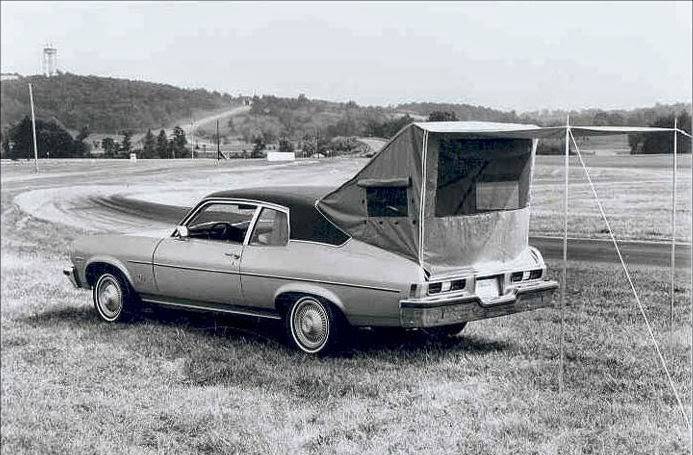
Some Pontiacs were designed with an 8-track player that was located on the transmission tunnel in the rear seat of the car. The car's dashboard was designed without radio in mind, and for some reason that was GM's decision.
The GM hatchback tent was introduced as more Americans went camping
In the mid-1970s, GM developed the hatchback tent design concept and introduced it to the Oldsmobile, Pontiac, and Chevrolet marques. The automaker developed the hatchback tent as more Americans went camping in the 70s.
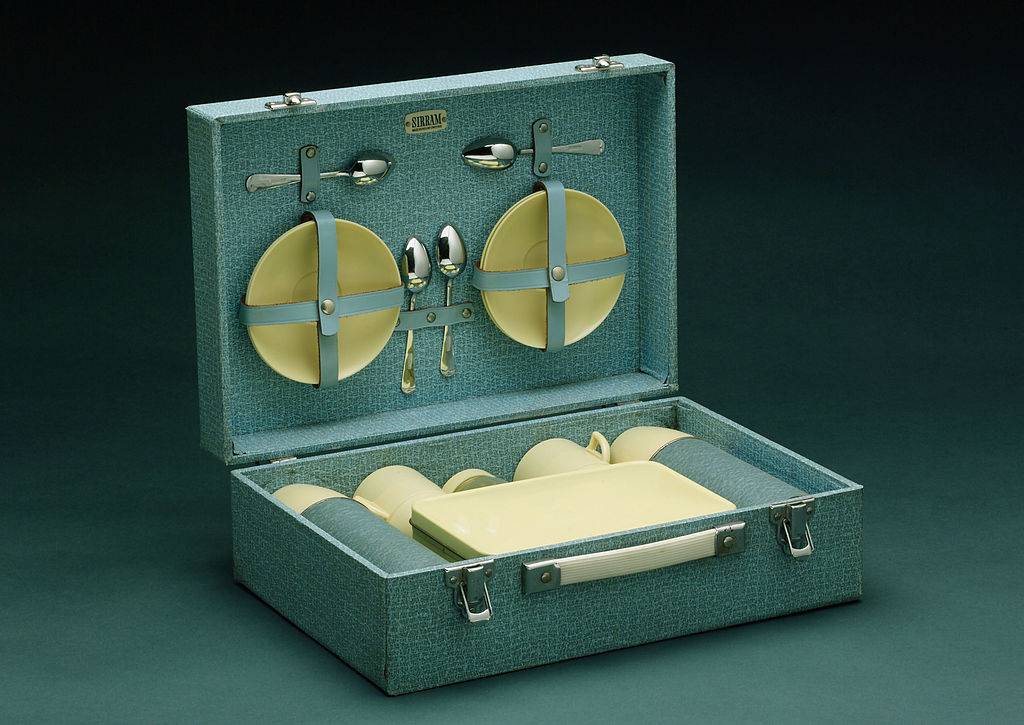
The idea was to have an economical camping option for couples and families looking to get away for the weekend without spending a lot of money. The "Hatchback Hutch" was offered alongside the Chevrolet Nova, Oldsmobile Omega, Pontiac Ventura, and Buick Apollo.
If you've ever felt the need to shave in the car, keep reading!
Picnics were popular
In the 1960s, driving a car was fun and relaxing on the weekends. Couples, friends or families can pack up and hit the road. After visiting places, it was common to find a park or lawn to have a picnic.

In some car models, a picnic basket made by the automaker could be added. It had everything you need for a relaxing day outdoors.
The Pontiac Ventura had a vinyl folding sunroof.
When the popularity of sunroofs took off in the 1970s, Pontiac got creative with the concept. The automaker designed the Ventura II with a vinyl sunroof that flips back to reveal a 25" x 32" roof. It was called "Sky Roof" on the Ventura Nova and "Sun Coupe" on the Skylark.
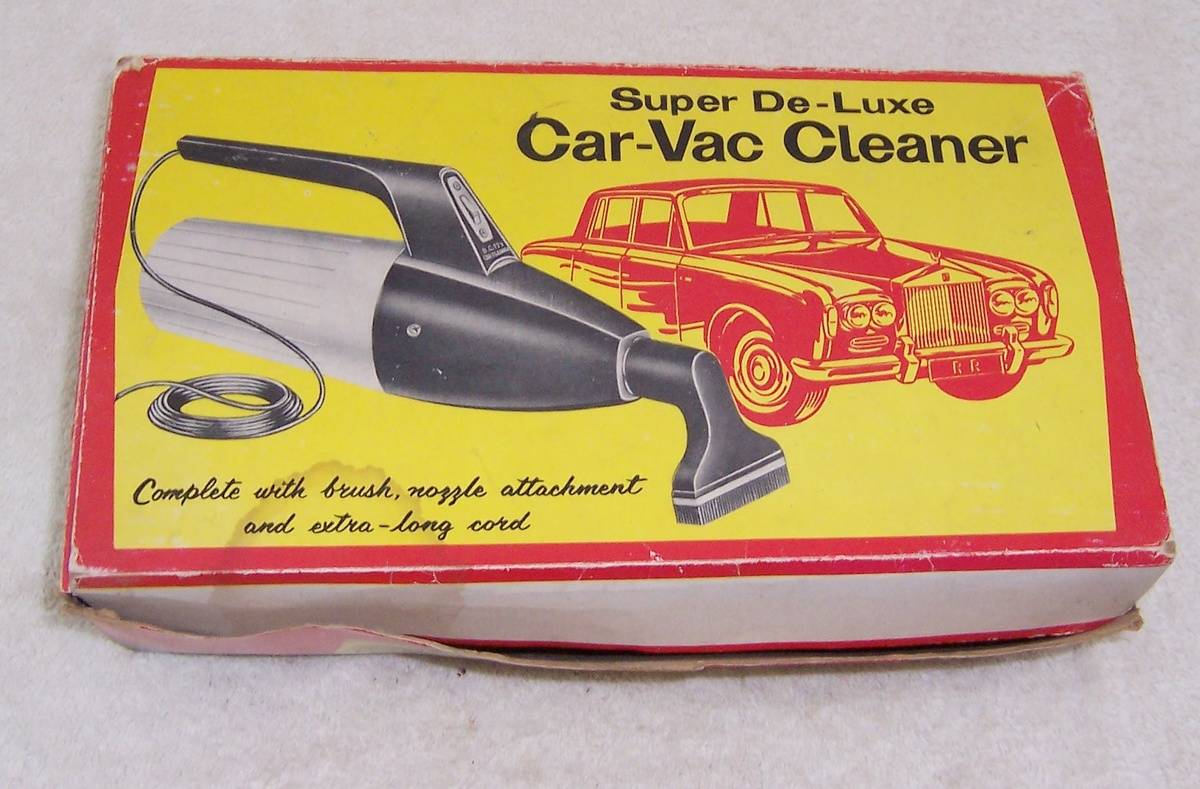
The sunroof has also been designed with a weather-resistant adjustable wind deflector. You won't see them on the roads.
Car vacuum cleaners are sold with your car
Another vintage car accessory that you won't find as an option at the dealer anymore is a vacuum cleaner specially made for your car by the car manufacturer. After all, you don't want to mess up the interior of your new car, right?
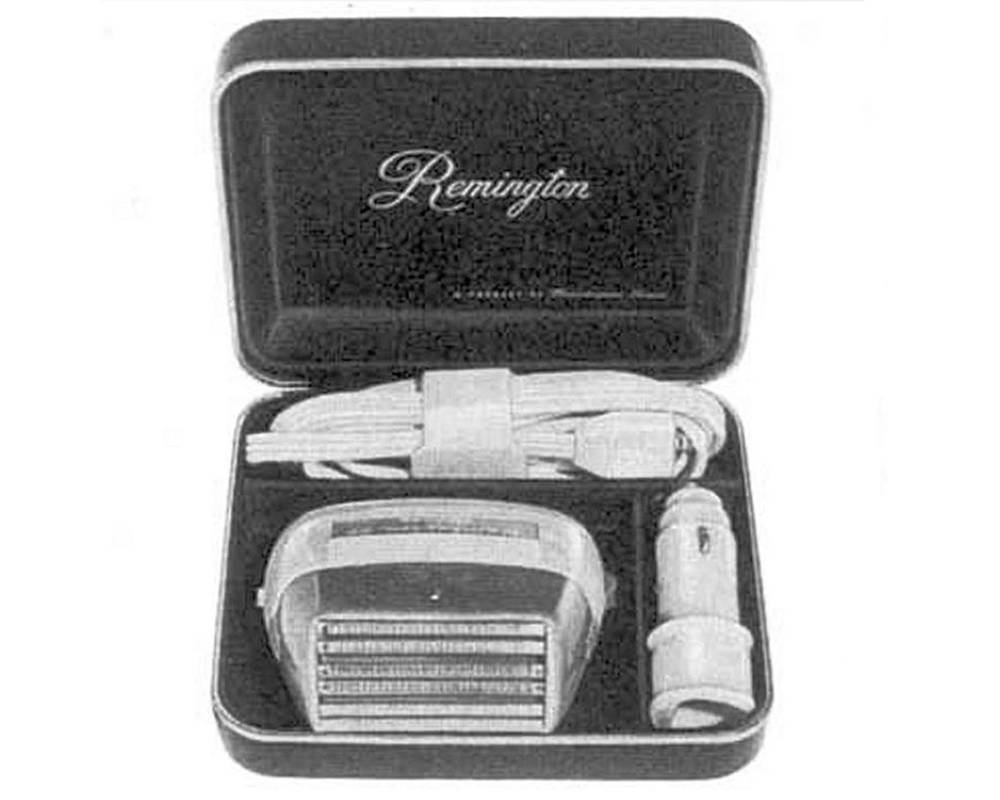
Car owners took great pride in the fact that their cars remained flawless in the 50s and 60s. What will your girlfriend think of you if you pick her up in a dusty car?
Some Pontiac models from the 50s were produced with a Remington electric razor
You could find this Remington electric razor as an accessory for Pontiac models in the mid 1950s. General Motors offered the razor with the car, thinking it would be useful for salespeople.

The shaver plugs into the car's cigarette lighter for power, which is a quick and convenient option. It also added a bit of flair to the car for buyers who were into this sort of thing.
Before the advent of grip and heating, driving gloves were common.
Up until the 1970s, it was customary for motorists to wear driving gloves while driving. Today it would be very strange if your friend put on driving gloves before starting the car, but once upon a time it was!

Safety and warmth were the main reasons drivers wore gloves. But in the late 60s, more and more cars were being developed with efficient heating systems and steering wheels with proper grip, making this trend obsolete and unnecessary.
Motorists could buy extra dials to crash into their dashboard
In the 50s and 60s, cars broke down more often. Instruments didn't always read properly and some cars had electrical problems. Often the dials wore out long before other parts of the car did.
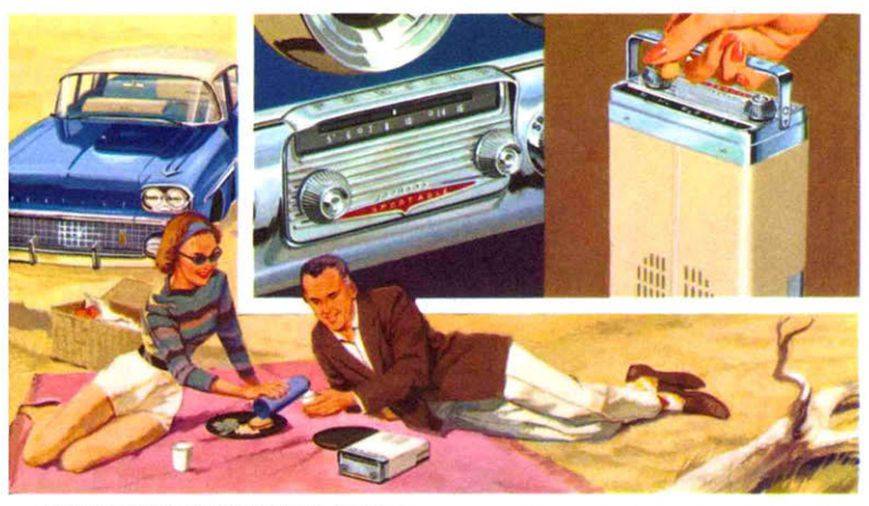
That's why some cars had the option to buy additional dials. Instead of taking their car to a mechanic, car owners can replace a faulty dial with a new one in their home garage.
Sports transistor AM radio
Another car accessory option that we've never seen become popular is the radio, which could be removed from the car's dashboard. Pontiac gave customers this opportunity in 1958 with the introduction of the Sportable transistorized AM radio.
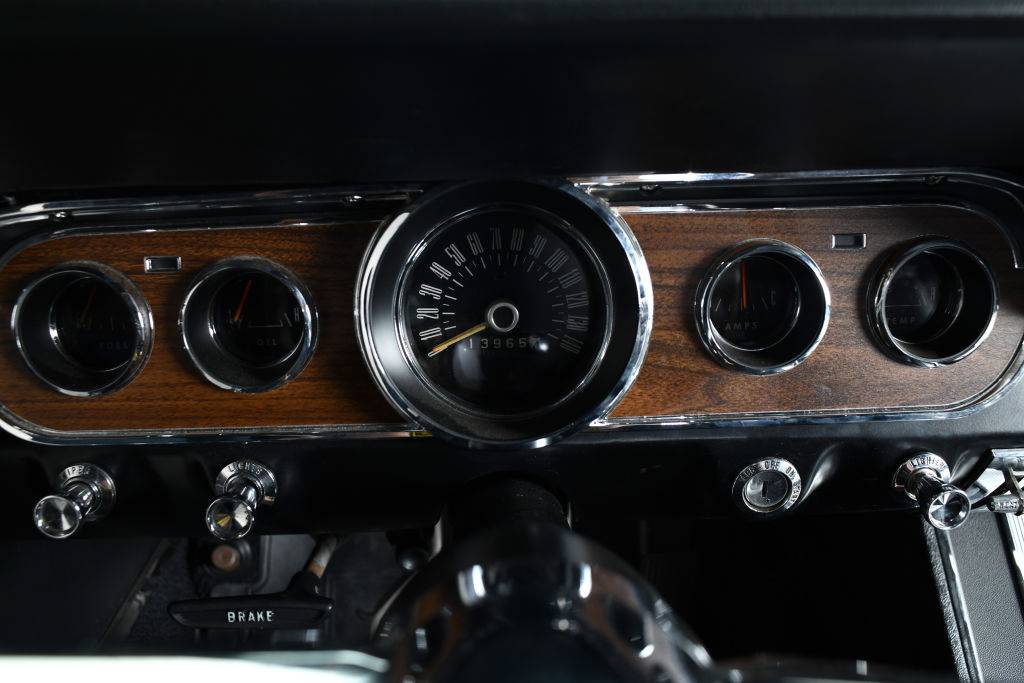
The radio fits into the car's dashboard, where it plays through the car's speakers and electrical system. When removed and transported, the radio runs on its own batteries. There are still a few pieces for sale on eBay today.
Pontiac's Instant Air Pump Can Fill Your Bike Tires
In 1969, Pontiac developed the concept of an instantaneous air pump. Under the hood of the car, the pump was connected to a port on the engine. It can then be used to inflate bike tires, air mattresses, or whatever you need for a day at the park or beach.

This unusual car accessory was not available on all Pontiac models and it is not clear how many people used the pump.
Mini table for your front seat
Have you ever sat in a car and thought, “I wish I had a table here”? Braxton thought motorists might need it and decided to make a desktop accessory for vehicles. It locks onto the dash and folds out so you can… do whatever you want.
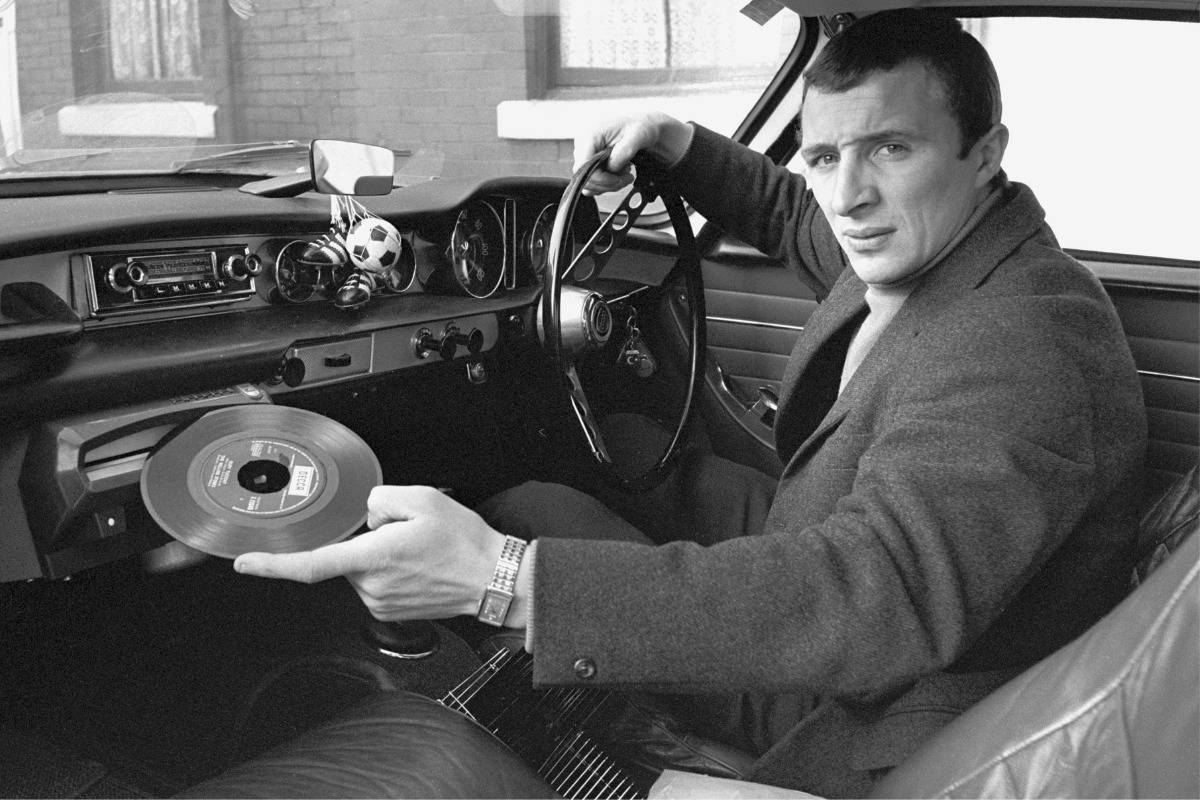
This has to be one of the silliest and most outsider vintage car accessories on this list. But hey, at some point people bought them!
First there was a car radio
Before there were mobile phones, it was possible to install a radiotelephone in some cars. The first one appeared in London in 1959.
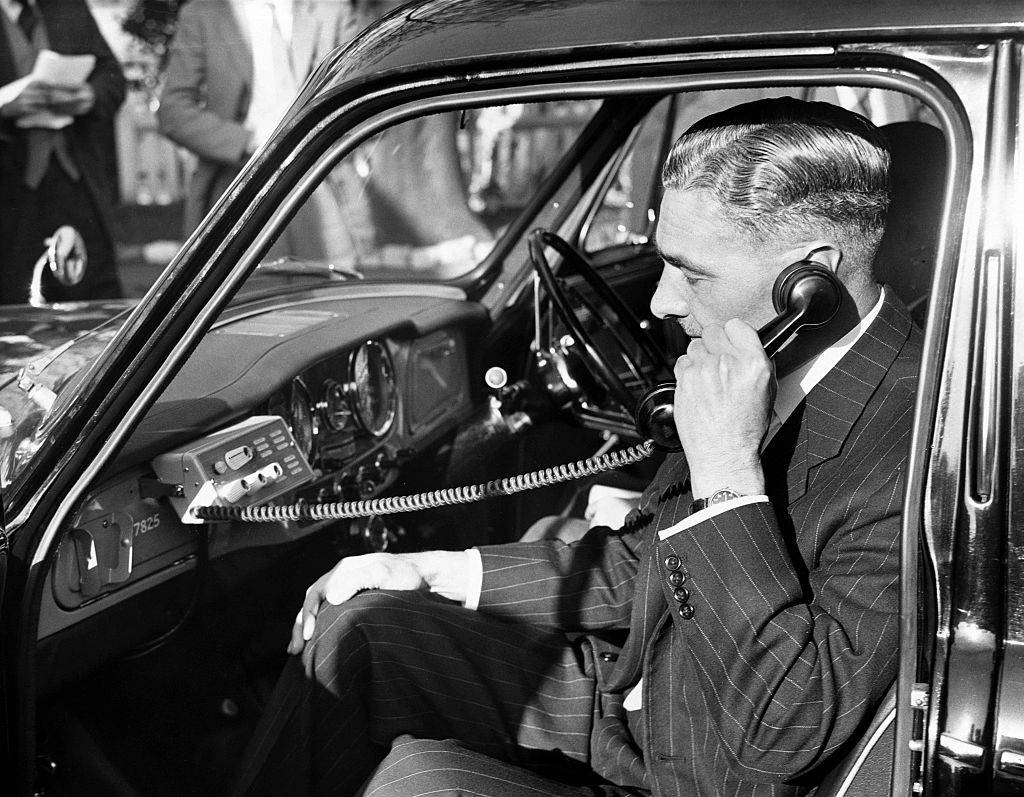
The trend continued throughout the 60s. The telephones operated using the public telephone network, and each motorist had his own telephone number. Phones were installed on the dashboard of the car, and the radiotelephone transceiver was in the trunk.
Inflatable seat cushions for long trips and sleep
Manchester based company Mosely developed these inflatable car seat cushions that motorists could buy as car accessories. These inflatable seats can add extra comfort on long trips or, like a powered razor, can be useful for a salesman who needs some rest before stops.

It wasn't such a bad idea, since the cushions fit the size of the seat.
Car seats didn't support so there was this
Another comfort accessory in a vintage car was the Sit-Rite Back Rest designed by KL. It promised to help reduce fatigue and discomfort during long road trips for both driver and passenger.
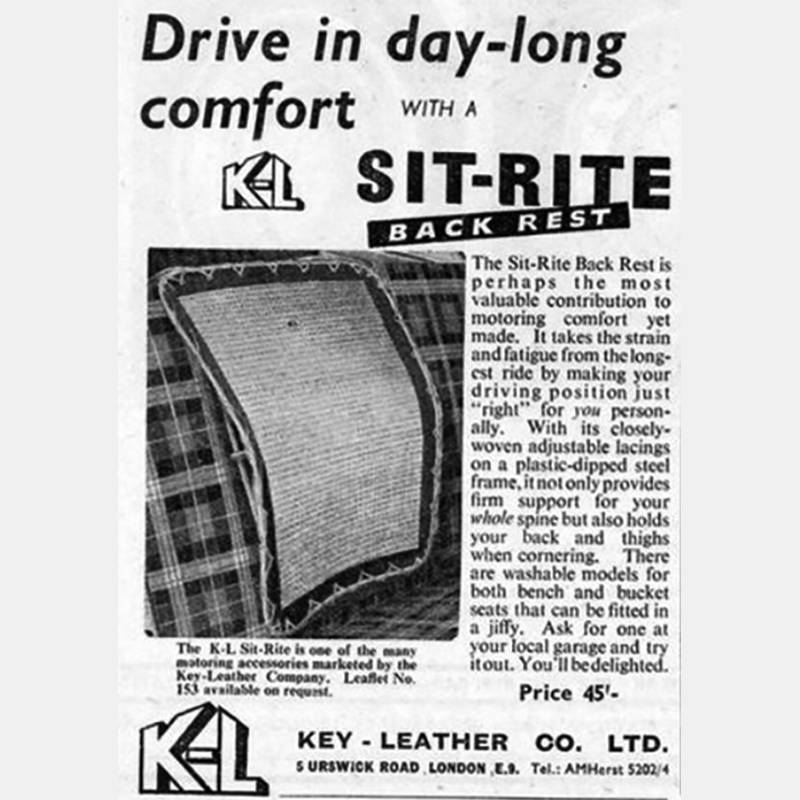
The backrest attaches to the seat for ease of use or removal. It makes sense that the company sold them in the 50s and 60s, since car seats were not designed with the lumbar support and cushioning that are available today.
Next: History of Ford Motor Company
1896 – Quadricycle
Henry Ford, founder of the Ford Motor Company, built his first car in June 1896. He called it a "quad" because it used four bicycle wheels. Powered by a four-horsepower twin-cylinder engine and driving the rear wheels, the Quadricycle was good for breakneck speeds of 20 mph thanks to the two-speed gearbox.
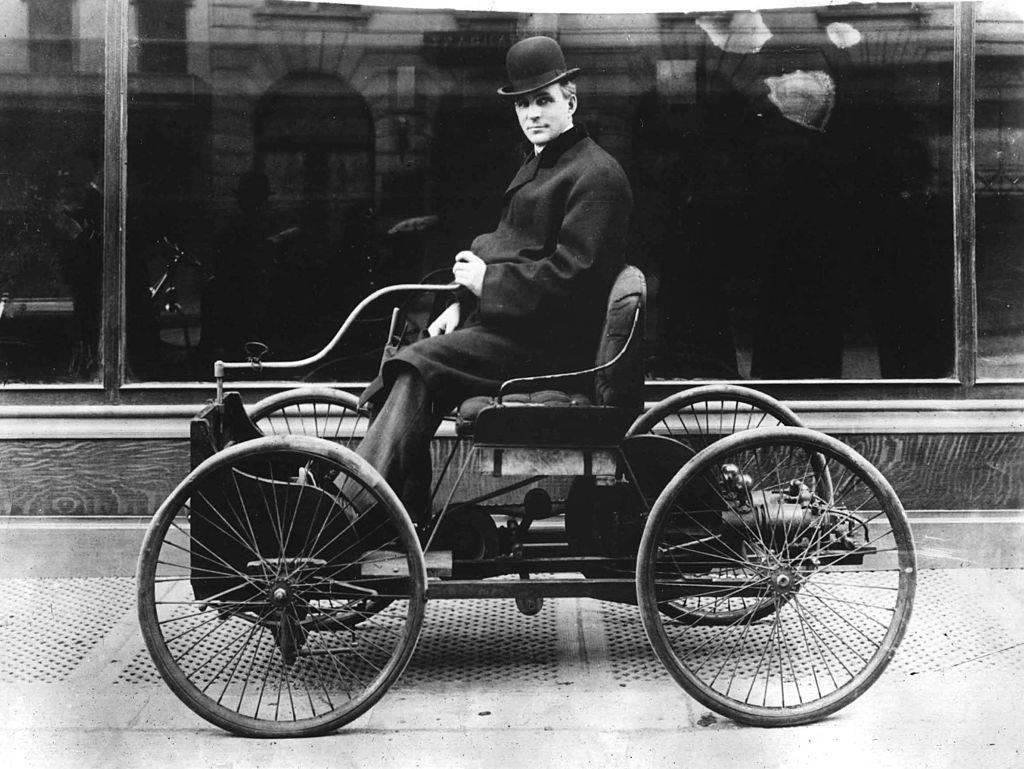
The very first quad was sold for $200. Ford sold two more vehicles before founding the Ford Motor Company. Henry Ford bought the original quad for $60 and it is currently stored at the Henry Ford Museum in Dearborn, Michigan.
1899 - Detroit Automobile Company
The Detroit Automobile Company (DAC) was founded on August 5, 1899 in Detroit, Michigan by Henry Ford. The first car, built in 1900, was a gas-powered delivery truck. Despite positive reviews, the truck was slow, heavy and unreliable.
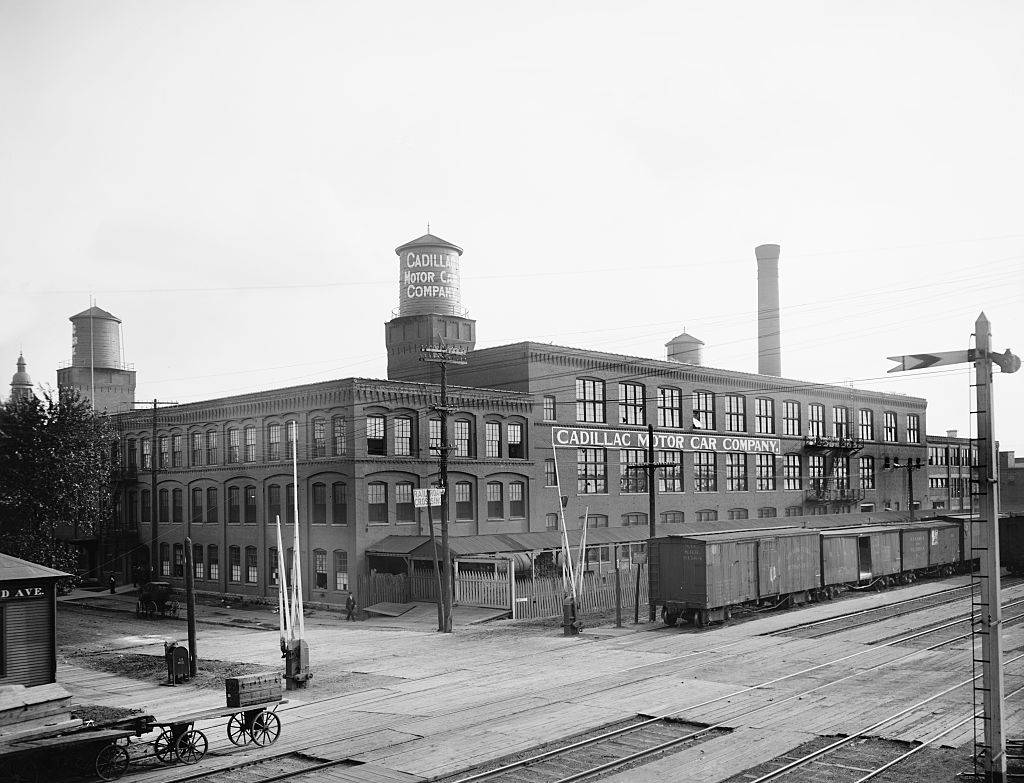
DAC closed in 1900 and was reorganized into the Henry Ford Company in November 1901. In 1902, Henry Ford was bought out of the company by his partners, including Henry Leland, who quickly reorganized the company into Cadillac. Car company.
Keep reading to find out what Ford did to raise his profile early on in his career!
1901 - Duel
After the Detroit Automobile Company closed down, Henry Ford needed investors to continue his automotive ambitions. To raise his profile, raise funding and prove that his cars could be commercially successful, he decided to take part in a race organized by the Detroit Automobile Club.
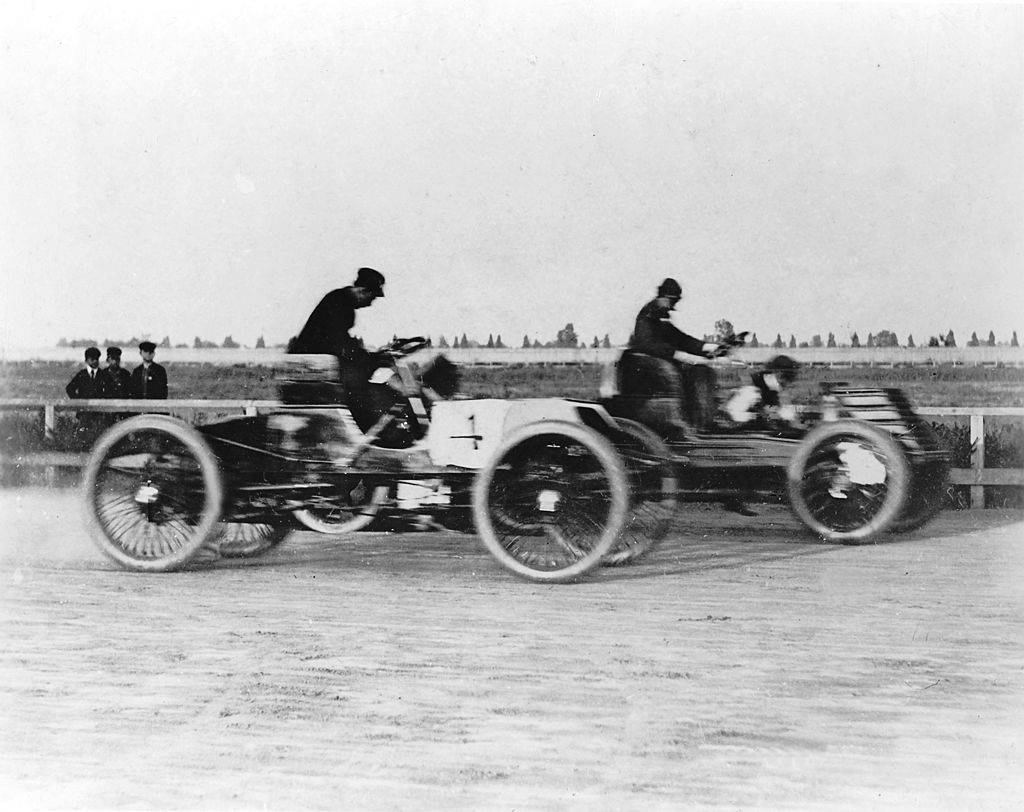
The race was held on a dirt oval racetrack one mile long. After mechanical problems plagued the cars, the race began with only Henry Ford and Alexander Winston to start. Henry Ford will win the race, the only one he has ever entered and received a $1000 prize.
1902 - «Monster»
The 999 was one of two identical racing cars built by Henry Ford and Tom Cooper. The cars had no suspension, no differential, and no rough, pivoting metal steering beam coupled to a 100-horsepower, 18.9-liter inline-four engine.
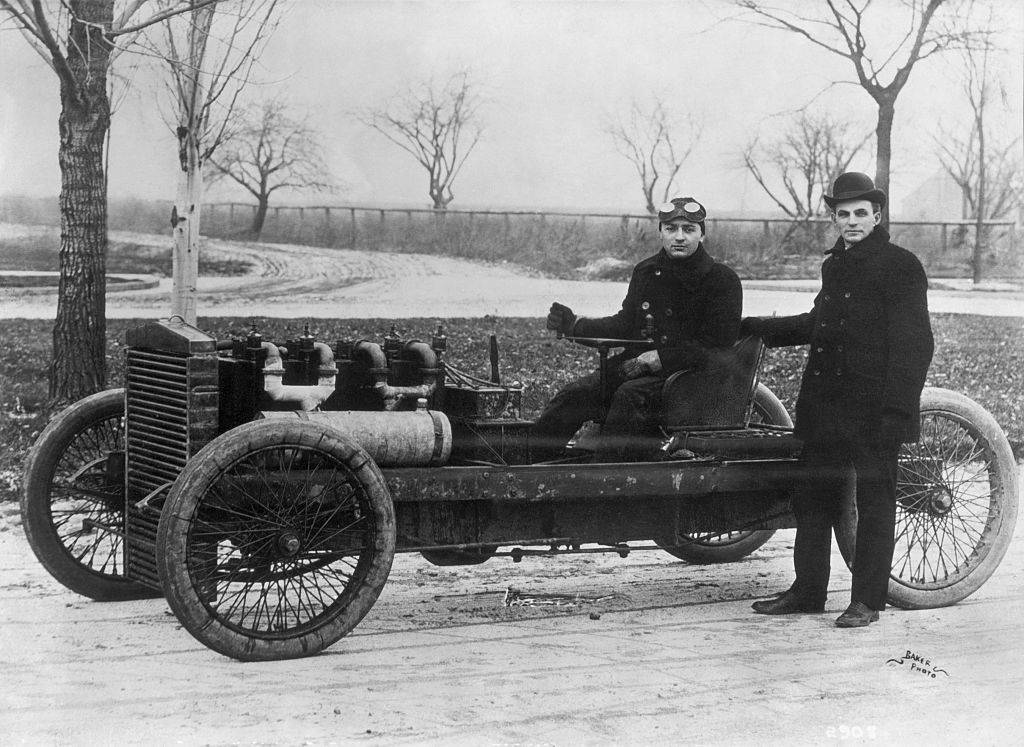
The car won the Manufacturers' Challenge Cup driven by Barney Oldfield, setting a track record at the same track Henry Ford had won the previous year. The car won multiple victories in its career and, with Henry Ford at the wheel, set a new land speed record of 91.37 mph on an icy lake in January 1904.
1903 - Ford Motor Company Inc.
In 1903, after successfully attracting enough investment, the Ford Motor Company was founded. The original shareholders and investors included John and Horace Dodge, who founded the Dodge Brothers Motor Company in 1913.

During the formative years of the Ford Motor Company, the Dodge brothers supplied a complete chassis for the 1903 Ford Model A. Ford Motor Company sold the first Model A on July 15, 1903. Prior to the debut of the iconic Model T in 1908, Ford produced the A, B, C, F, K, N, R, and S models.
Ahead, we'll show you just how old the famous Ford logo really is!
1904 Ford Canada opens
Ford's first international plant was built in 1904 in Windsor, Ontario, Canada. The plant was directly across the Detroit River from the original Ford assembly plant. Ford Canada was established as a completely separate entity, and not a subsidiary of the Ford Motor Company, to sell cars in Canada as well as throughout the British Empire.
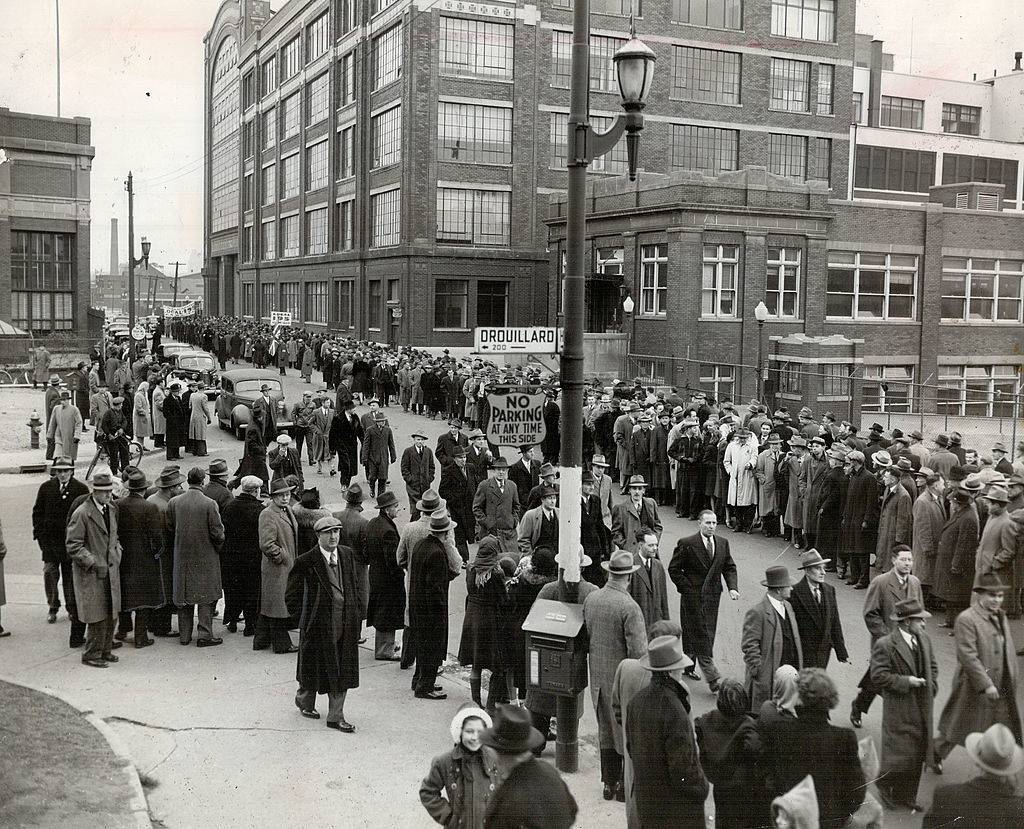
The company used patent rights to produce Ford vehicles. In September 1904, the Ford Model C became the first car to roll off the factory line and the first car to be produced in Canada.
1907 - The famous Ford logo
The Ford logo, with its distinctive typeface, was first created by Childe Harold Wills, the company's first chief engineer and designer. Wills used his grandfather's stencil set for type, modeled after the script taught in schools in the late 1800s.
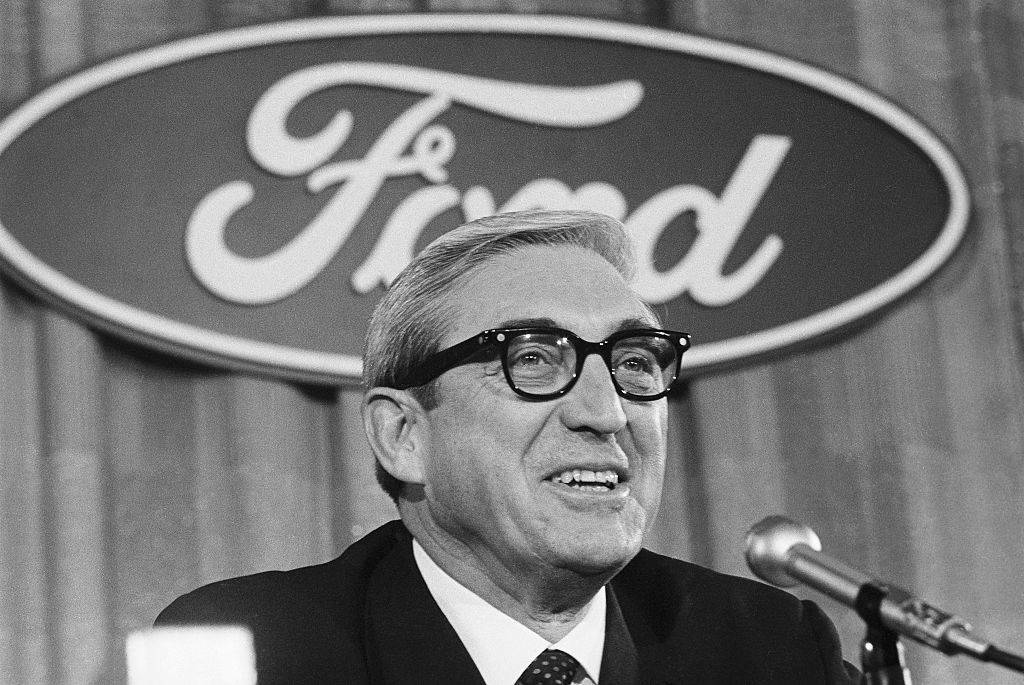
Wills worked on and assisted with the 999 race car, but influenced the Model T the most. He designed the transmission for the Model T and the removable engine cylinder head. He left Ford in 1919 to found his own automobile company, Wills Sainte Claire.
1908 - Popular Model T
The Ford Model T, produced from 1908 to 1926, revolutionized transportation. In the early 1900s, cars were still rare, expensive, and horribly unreliable. The Model T changed all that with a simple, reliable design that was easy to maintain and affordable for the average American. Ford sold 15,000 Model T cars in its first year.
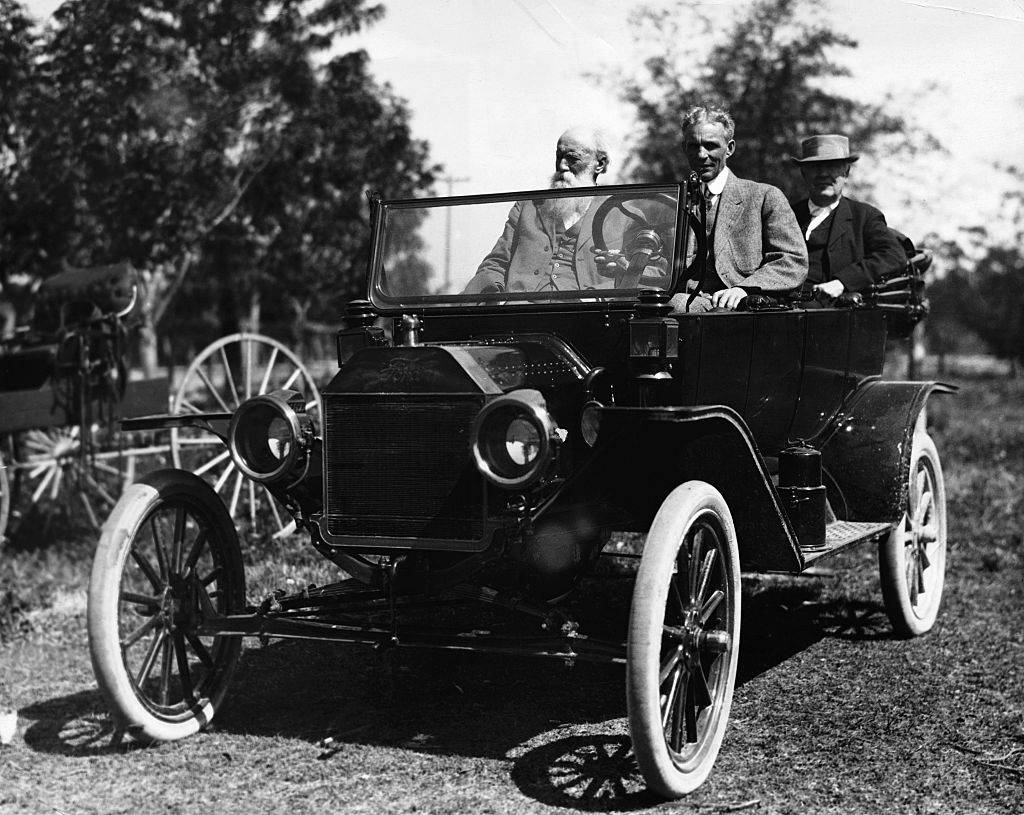
The Model T was powered by a 20 horsepower four-cylinder engine with a two-speed transmission with reverse and reverse. Top speed was somewhere between 40 - 45 mph, which is fast for a car that has no brakes on the wheels, just a brake on the transmission.
Do you know when Ford moved to the UK? Keep reading to find out!
1909 – Founding of Ford of Britain.
Unlike Ford of Canada, Ford of Britain is a subsidiary of the Ford Motor Company. Ford had been selling cars in the UK since 1903, but needed legitimate manufacturing facilities to expand in the UK. Ford Motor Company Limited was founded in 1909 and the first Ford dealership opened in 1910.
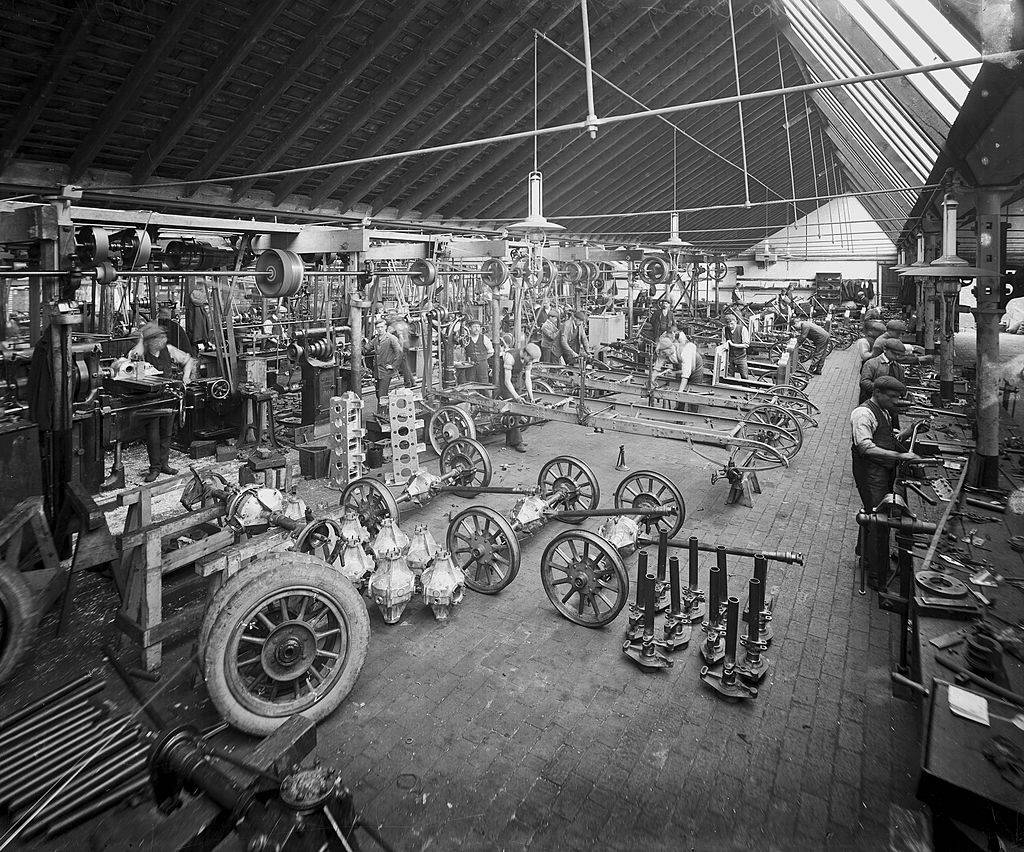
In 1911, Ford opened an assembly plant at Trafford Park to build Model Ts for the overseas market. In 1913, six thousand cars were built, and the Model T became the best-selling car in Britain. The following year the moving assembly line was integrated into the plant and Ford of Britain could produce 21 cars an hour.
1913 - Moving assembly line
The assembly line has been in the automotive industry since 1901, when Ransome Olds used it to build the first mass-produced Oldsmobile Curved-Dash. Ford's great innovation was the moving assembly line, which allowed a worker to do the same job over and over again without changing his job.
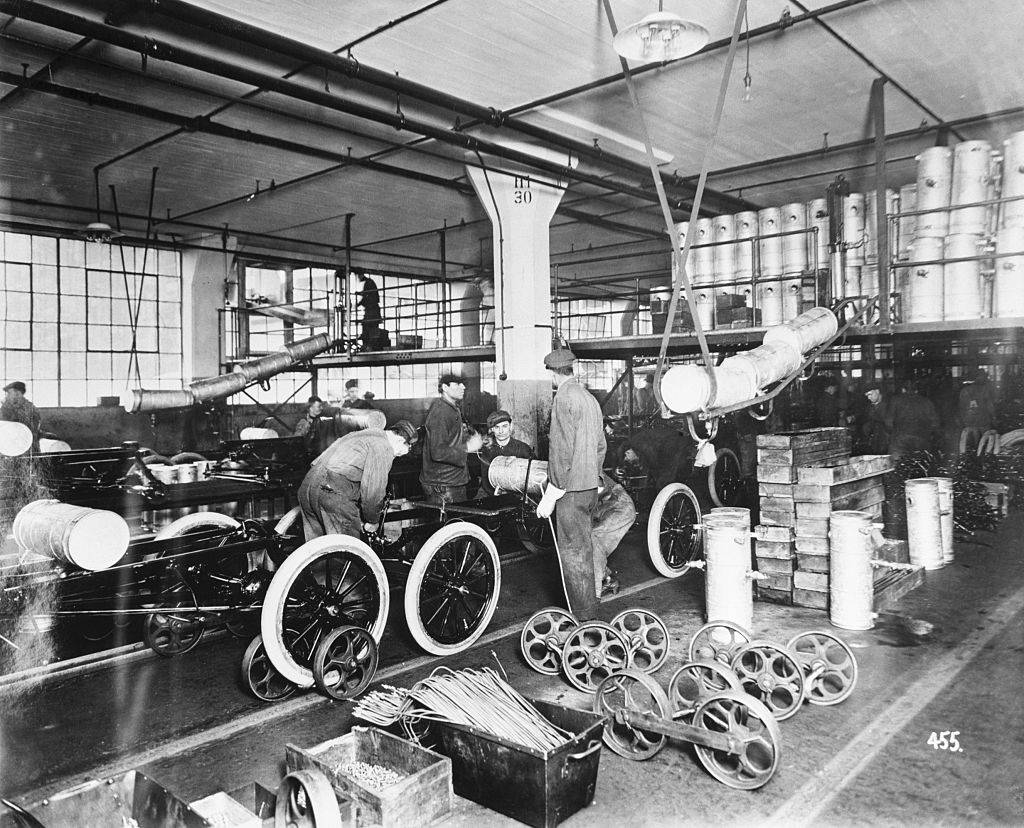
Before the moving assembly line, the Model T took 12.5 hours to assemble, after the moving assembly line was integrated into the factory, the assembly time for one car was reduced to 1.5 hours. The speed at which Ford was able to build cars allowed them to constantly cut prices, allowing more people to afford to buy a car.
1914 - $5 Labor Day
When Ford introduced the "$5 a day" wage rate, it was double what the average factory worker was earning. At the same time, Ford switched from a nine-hour day to an eight-hour one. This meant that Ford's factory could run three shifts instead of two.
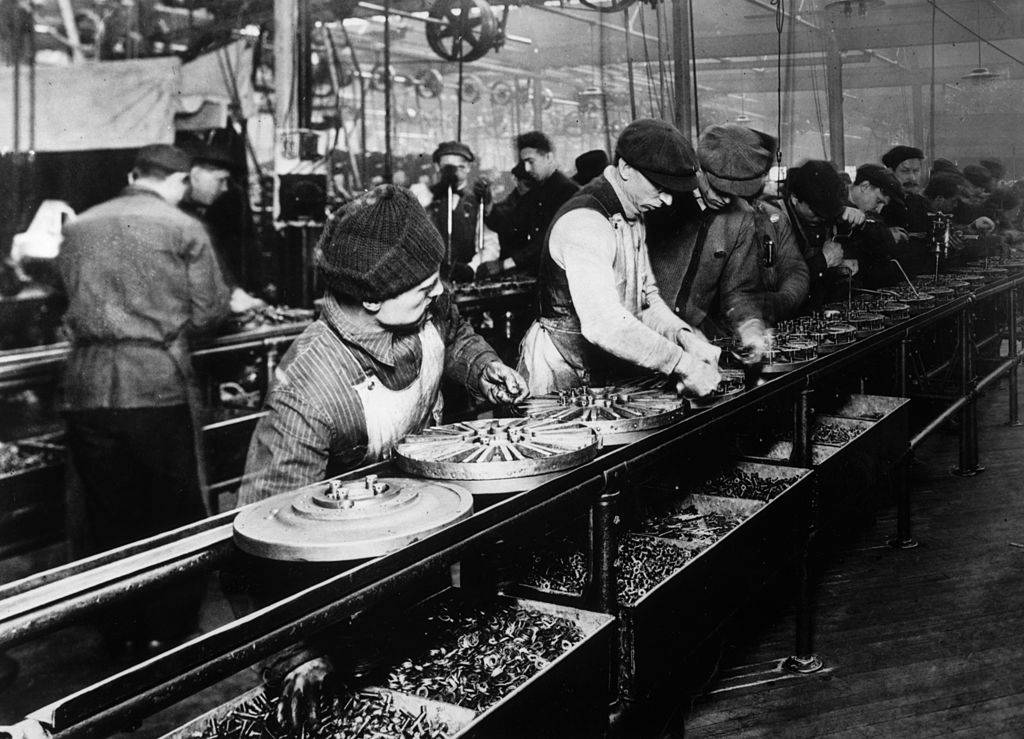
The increase in wages and changing working hours meant that employees were more likely to stay with the company, have more free time and be able to afford to buy the cars they make. The day after Ford announced "Day $5", 10,000 people lined up at the company's offices hoping to find work.
1917 - River Rouge Complex
In 1917, the Ford Motor Company began building the Ford River Rouge Complex. When it was finally completed in 1928, it was the largest plant in the world. The complex itself is 1.5 miles wide and 93 miles long, with 16 million buildings and XNUMX million square feet of factory space.
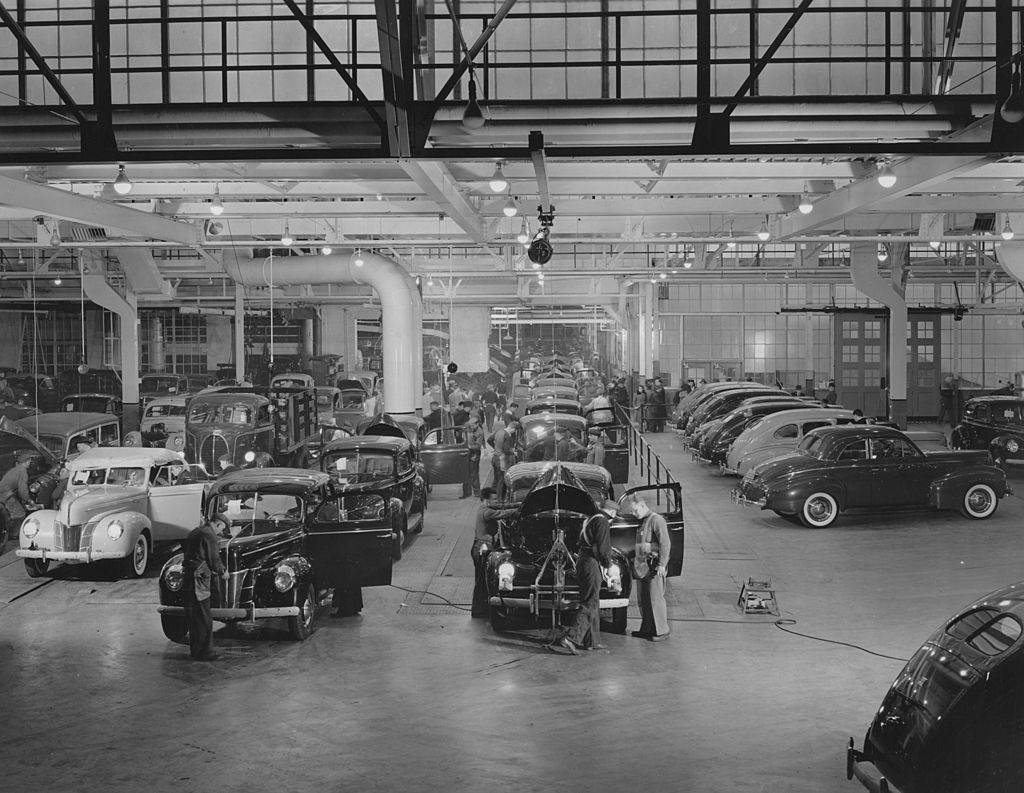
The plant had its own docks for ships, and over 100 miles of railroad tracks ran inside the buildings. He also had his own power plant and steel mill, which meant he could take all the raw materials and turn them into cars in one plant. Prior to the Great Depression, the River Rouge complex employed 100,000 people.
Ford got into trucks early and we can tell you what year it was next!
1917 - First Ford truck
The Ford Model TT was the first truck produced by the Ford Motor Company. Based on the Model T car, it had the same engine but was fitted with a heavier frame and rear axle to handle the job that the TT was supposed to do.
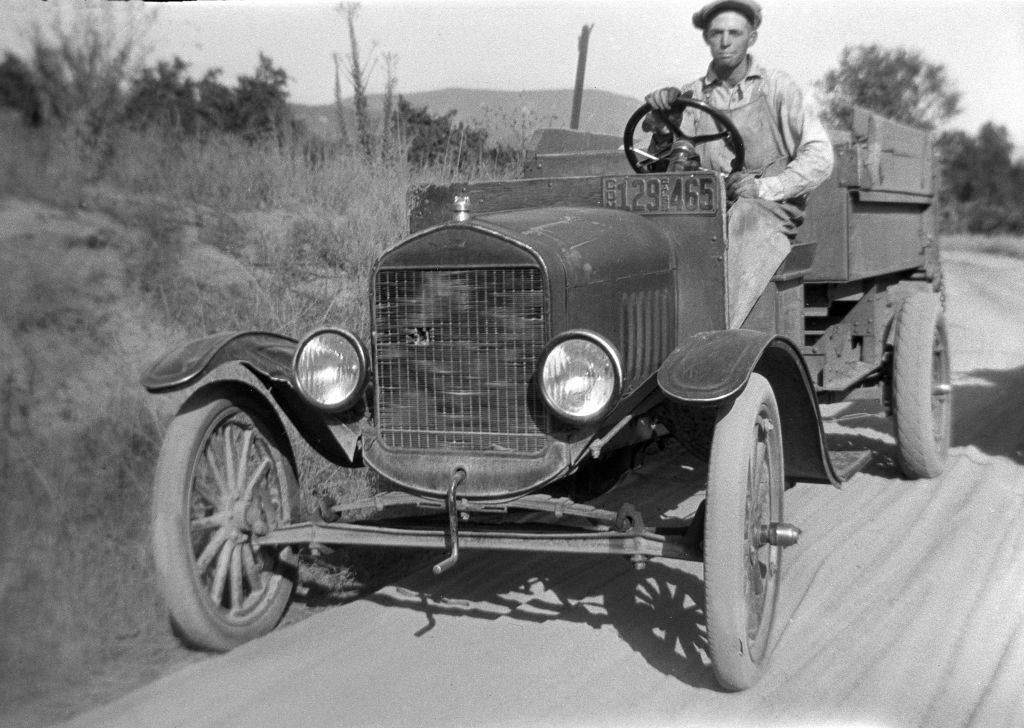
The TT model proved to be very durable, but slow even by 1917 standards. With the standard gear, the truck could reach speeds of up to 15 mph, and with the optional special gear, the recommended top speed was 22 mph.
1918—World War I
In 1918, the US, along with its allies, was involved in a horrific war raging across Europe. At the time it was called the "Great War", but now we know it as the First World War. As a means of supporting the war effort, the Ford River Rouge complex began production of the Eagle-class patrol boat, a 110-foot-long ship designed to harass submarines.

A total of 42 such ships were built at the Ford plant, along with 38,000 military vehicles, ambulances and Model T trucks, 7,000 Fordson tractors, two types of armored tanks, and 4,000 Liberty aircraft engines.
1922 - Ford buys Lincoln
In 1917, Henry Leland and his son Wilfred founded the Lincoln Motor Company. Leland is also known for founding Cadillac and for creating the personal luxury car segment. Somewhat ironically, the two most famous luxury car brands in the United States were founded by the same person with the same goal of creating luxury cars, but ended up becoming direct competitors for over 100 years.
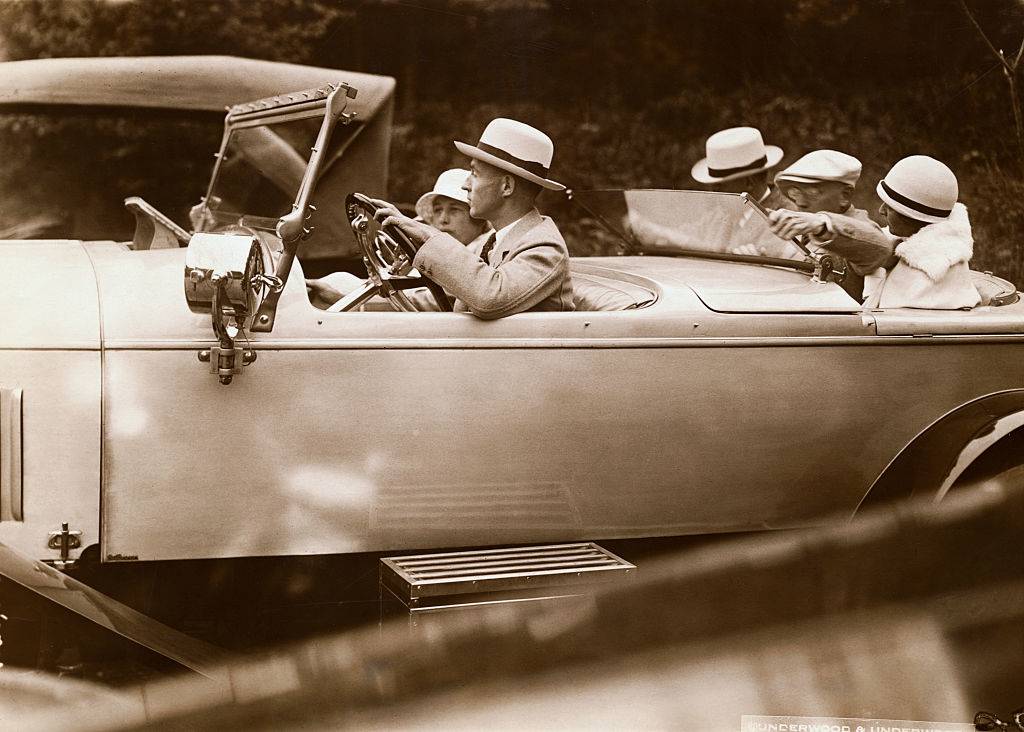
Ford Motor Company bought the Lincoln Motor Company in February 1922 for $8 million. The purchase allowed Ford to compete directly with Cadillac, Duesenberg, Packard and Pierce-Arrow for market share in luxury cars.
1925 - Ford makes airplanes
The Ford Trimotor, so named because of its three engines, was a transport aircraft designed for the general aviation market. The Ford Trimotor, very similar in design to the Dutch Fokker F.VII and the work of German aircraft designer Hugo Junkers, was found to infringe on Junkers' patents and was banned from sale in Europe.
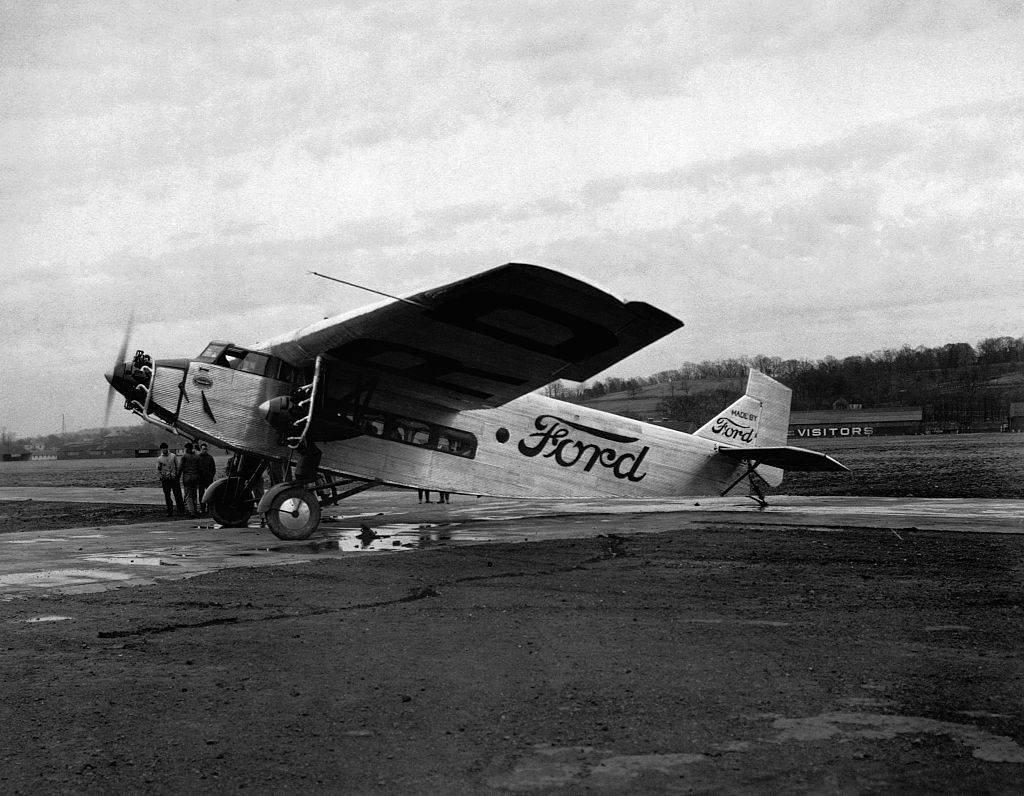
In the US, Ford built 199 Trimotor aircraft, of which about 18 survive to this day. The first models were equipped with 4 hp Wright J-200 engines, and the final version was equipped with 300 hp engines.
The milestone Ford Bigs 1925 is just around the corner!
1925 - 15 million Model T
In 1927, the Ford Motor Company celebrated an incredible milestone by building the fifteen millionth Model T. The actual car was built as a touring model; four-door with retractable top and seating for five people. Its design and construction are very similar to the very first Model T of 1908 and are powered by the same four-cylinder engine with two forward and one reverse gear.

On May 26, 1927, the car rolled off the assembly line driven by Edsel Ford, son of Henry Ford, with Henry on the shotgun. The car is currently in the Henry Ford Museum.
1927 - Ford Model A
After the 1927 millionth Model T was built, the Ford Motor Company closed for six months to completely retool the plant to produce the all-new Model A. Production ran from 1932 to 5, with nearly XNUMX million cars built.
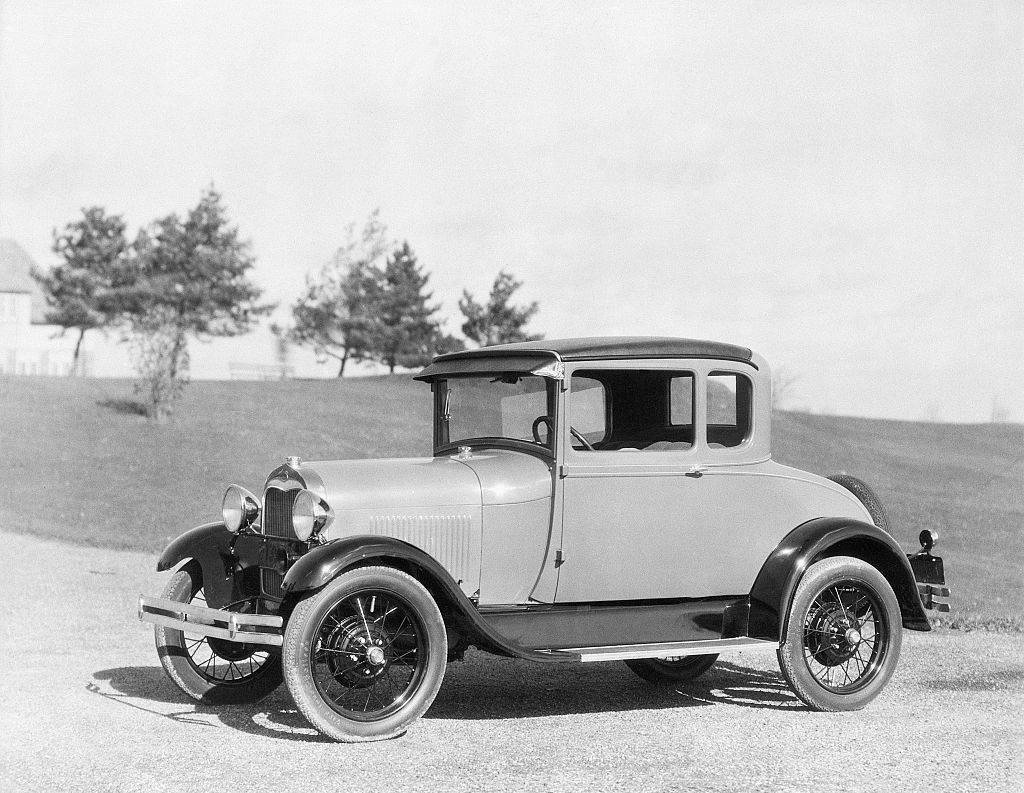
Surprisingly, the car was available in 36 different variants and trim levels, ranging from a two-door coupe to a convertible, mail truck, and wood-paneled vans. Power came from a 3.3-liter inline-four with 40 horsepower. Combined with a three-speed transmission, the Model A topped out at 65 mph.
1928 Ford founds Fordland.
In the 1920s, the Ford Motor Company was looking for a way to escape the British rubber monopoly. Rubber products are used for everything from tires to door seals, suspension bushings and many other components. Ford negotiated with the Brazilian government for 2.5 million acres of land for growing, harvesting and exporting rubber in the state of Pará in northern Brazil.

Ford will be exempt from Brazilian taxes in exchange for 9% of the profits. The project was abandoned and relocated in 1934 after a series of problems and uprisings. In 1945, synthetic rubber reduced the demand for natural rubber and the area was sold back to the Brazilian government.
1932 - Flat V8 engine
While not the first production V8 engine available in a car, the Ford Flathead V8 is perhaps the most famous and helped create the "hot rod" community that started America's love for the engine.
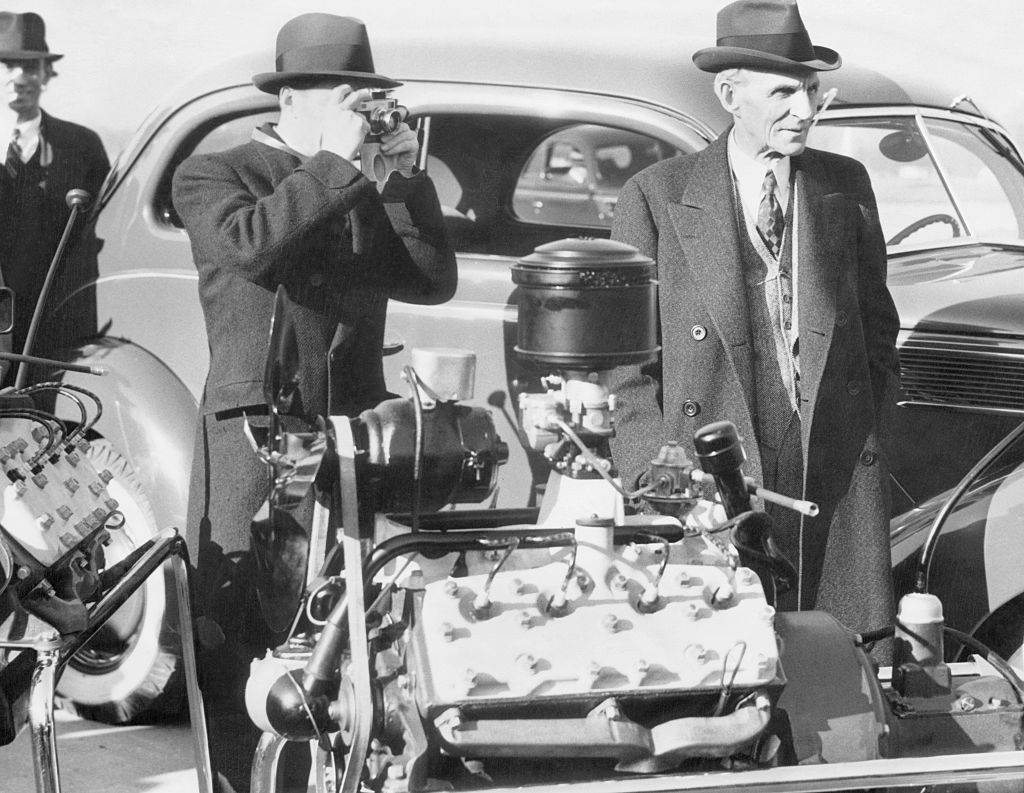
First developed in 1932, the 221-liter Type 8 V3.6 produced 65 horsepower and was first installed in a 1932 Model '18. Production went from 1932 to 1953 in the USA. The final version, the Type 337 V8, produced 154 horsepower when fitted to Lincoln vehicles. Even today, the flathead V8 remains popular with hot rodders due to its durability and ability to produce more power.
1938 - Ford creates the Mercury brand
Edsel Ford founded the Mercury Motor Company in 1938 as an entry-level premium brand that sat somewhere between Lincoln luxury cars and Ford base cars. The Mercury brand is named after the Roman god Mercury.
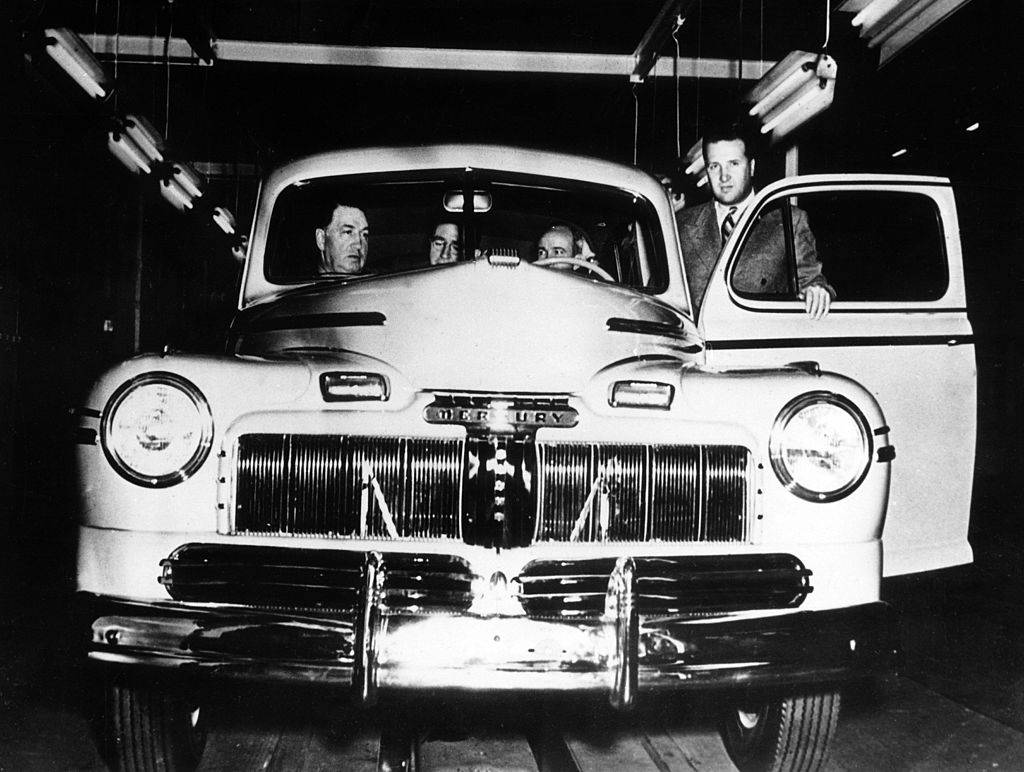
The first car produced by Mercury was the 1939 '8 Mercury sedan. Powered by a Type 239 flathead V8 with 95 horsepower, the new 8 is $916. The new brand and line of vehicles proved popular, and Mercury sold more than 65,000 vehicles in its first year. The Mercury brand was discontinued in 2011 due to poor sales and a brand identity crisis.
1941 - Ford builds jeeps
The original Jeep, named after "GP" or "general purpose", was originally developed by Bantam for the US Army. At the start of World War II, Bantam was thought to be too small to be able to produce enough Jeeps for the military, who were requesting 350 vehicles per day, and the design was provided by Willys and Ford.
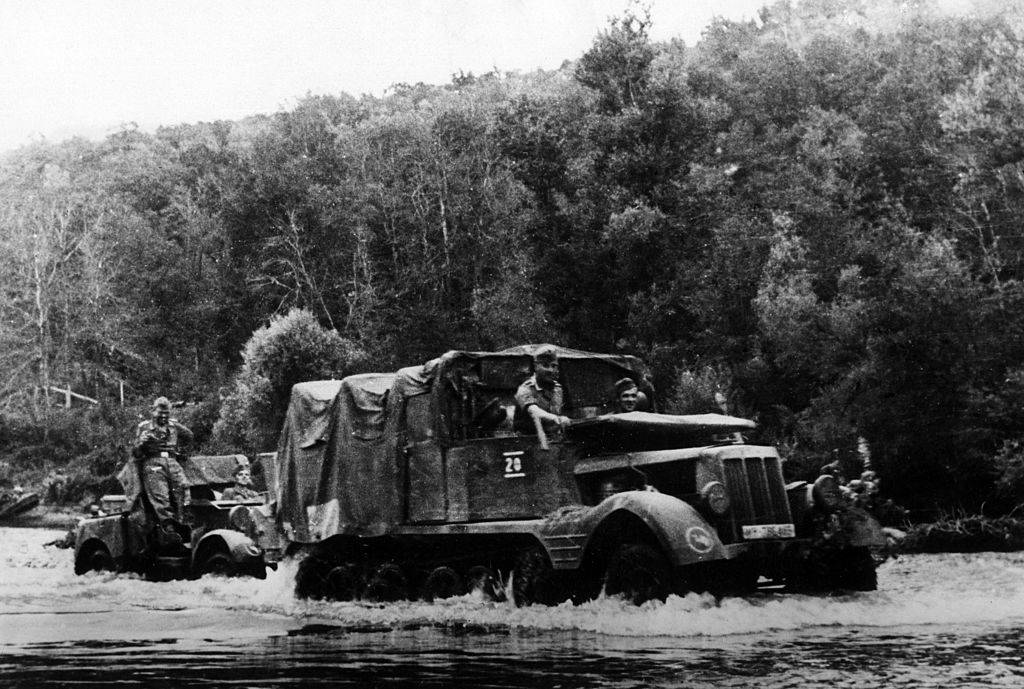
Bantam designed the original, Willys-Overland modified and improved the design, and Ford was selected as the additional supplier/manufacturer. Ford is actually credited with developing the familiar "Jeep Face". By the end of World War II, Ford had produced just over 282,000 Jeeps for military use.
1942 - Refitting for war
During World War II, much of American production was devoted to the production of equipment, munitions, and supplies for the war effort. In February 1942, Ford stopped making civilian cars and began producing a staggering amount of military equipment.
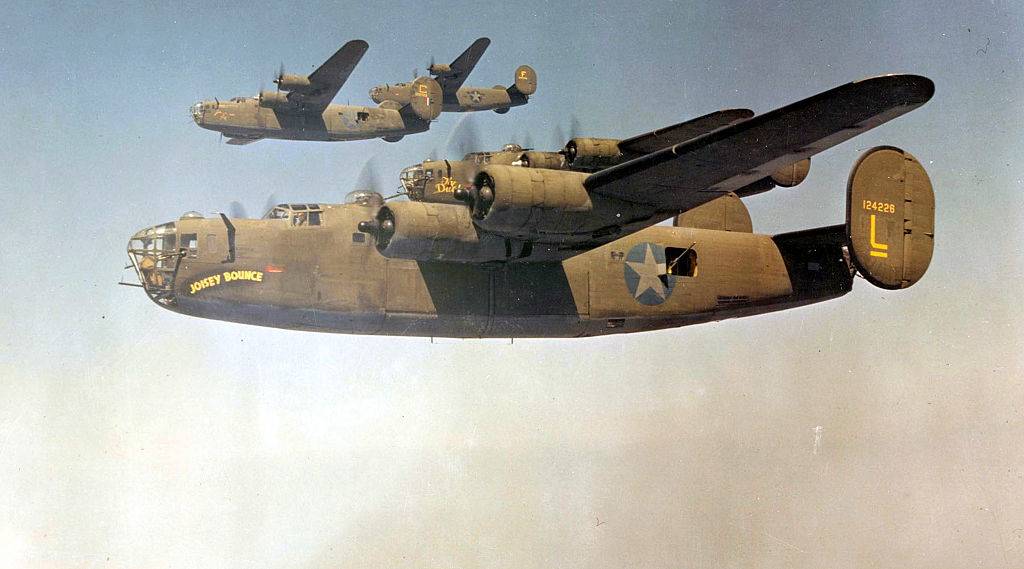
Ford Motor Company has produced over 86,000 complete aircraft, 57,000 aircraft engines, and 4,000 military gliders across all locations. His factories produced jeeps, bombs, grenades, four-wheel drive trucks, superchargers for aircraft engines, and generators. The gigantic Willow Run plant in Michigan built B-24 Liberator bombers on a 1-mile assembly line. At full capacity, the plant could produce one aircraft per hour.
1942 - Lindbergh and Rosie
In 1940, the US government asked Ford Motors to build B-24 bombers for the war effort. In response, Ford built a huge factory of more than 2.5 million square feet. At the time, renowned aviator Charles Lindbergh worked as a consultant at the plant, calling it the "Grand Canyon of the mechanized world."
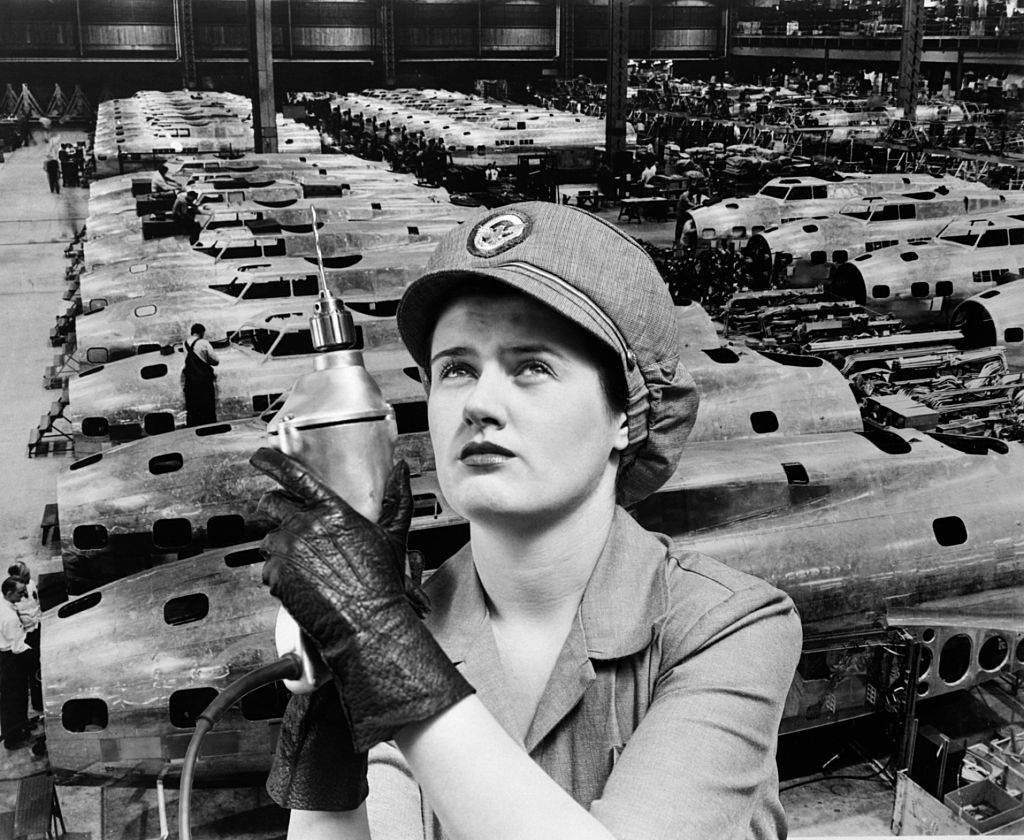
Also at the Willow Run facility was a young riveter named Rose Will Monroe. After actor Walter Pidgeon discovered Mrs. Monroe at the Willow Run Plant, she was chosen to star in promotional films for the sale of war bonds. This role made her a household name during World War II.
1948 Ford F-series pickup
The Ford F-Series pickup truck was the first truck designed specifically for trucks by Ford that did not share a chassis with their vehicles. The first generation, produced from 1948 to 1952, had eight different chassis from F-1 to F-8. The F-1 truck was a light half-ton pickup truck, while the F-8 was a three-ton "Big Job" commercial truck.
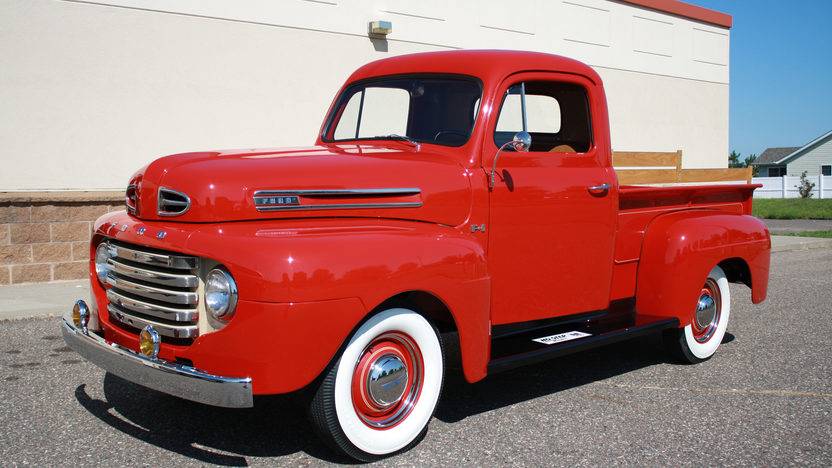
Engines and power depended on the chassis, and the popular F-1 pickup truck was available with either an inline-six engine or a Type 239 Flathead V8 engine. All trucks, regardless of chassis, were equipped with three-, four- or five-speed manual transmissions.
1954 – Ford Thunderbird
First introduced at the Detroit Auto Show in February 1954, the Ford Thunderbird was originally conceived as a direct competitor to the Chevrolet Corvette, which debuted in 1953. .
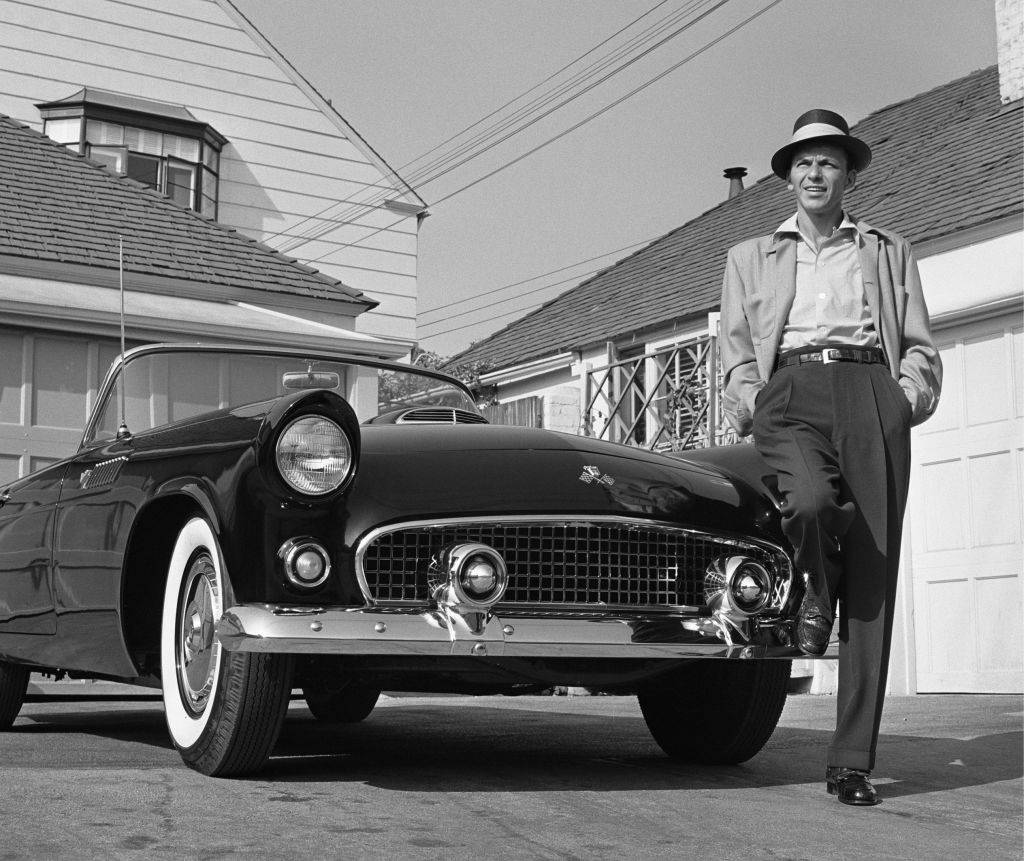
Despite the focus on comfort, the Thunderbird outsold the Corvette in its first year with sales of just over 16,000 compared to the Corvette's 700 sales. With an 198-horsepower V8 engine and a top speed of just over 100 miles per hour, the Thunderbird was a capable performer and more luxurious than a Corvette of the time.
1954 - Ford begins crash testing
In 1954, Ford began prioritizing the safety of its vehicles. Concerned about how the cars and passengers had handled the accident, Ford began conducting safety tests on his vehicles. Ford cars crashed into each other to analyze their safety and find out how they could be made safer.
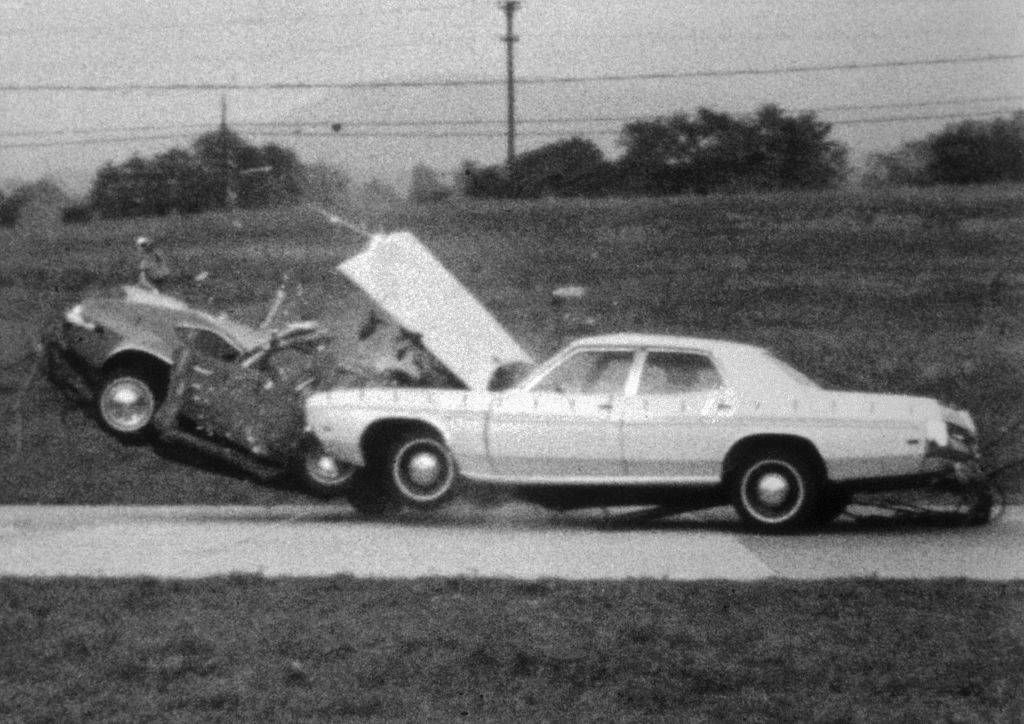
These tests, along with countless others conducted by other vehicle manufacturers, will lead to significant improvements in vehicle safety and survivability in car crashes. Three-point seat belts, crumple zones, airbags and side impact protection are all innovations that have emerged from car crash tests.
1956 - Ford Motor Company goes public
On January 17, 1956, the Ford Motor Company went public. At the time, it was the largest initial public offering (IPO) in American history. In 1956 Ford Motor Company was the third largest company in the US after GM and the Standard Oil Company.

The IPO of 22% Ford Motor Company was so massive that more than 200 banks and firms participated in it. Ford offered 10.2 million Class A shares at an IPO price of $63. By the end of the first day of trading, the share price had risen to $69.50, which meant the company could be valued at $3.2 billion.
1957 - Ford introduces the Edsel brand
In 1957 Ford Motor Company introduced the new Edsel brand. The company, named after Edsel B. Ford, son of founder Henry Ford, was expected to increase Ford's market share to compete with General Motors and Chrysler.
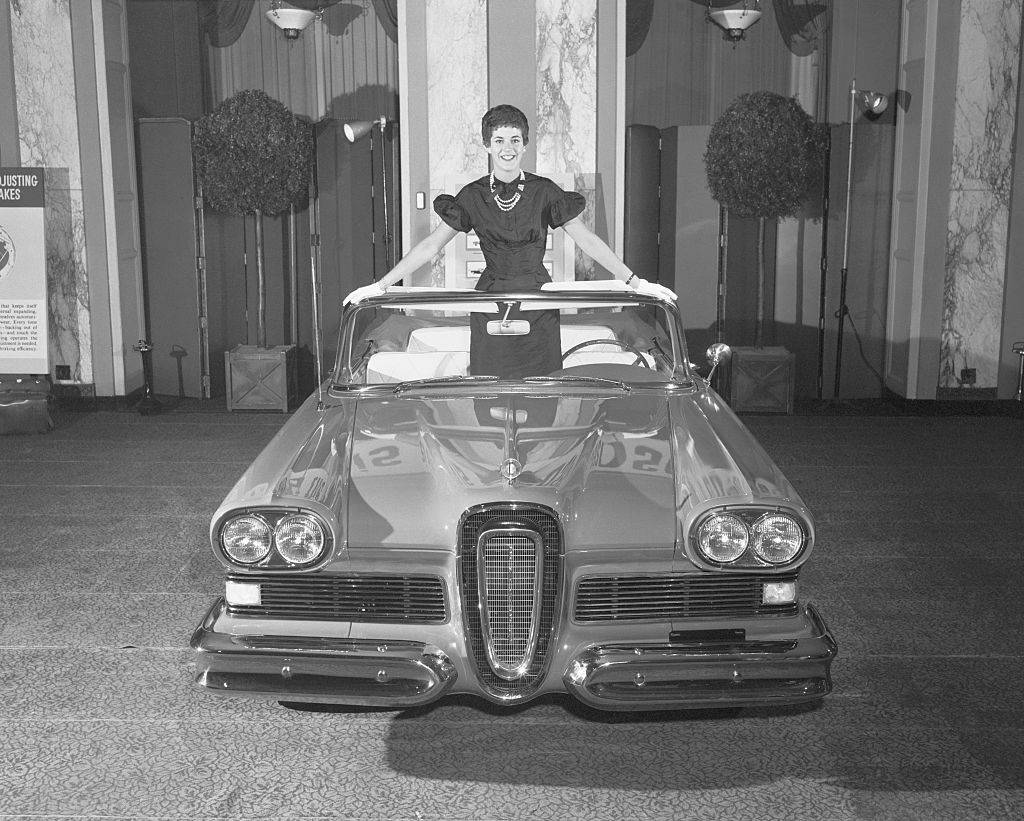
Unfortunately, the cars never sold particularly well, and the public felt that the cars were over-hyped and overpriced. Controversial design, reliability issues, and the onset of an economic downturn in 1957 contributed to the brand's downfall. Production ceased in 1960 and the company also closed. A total of 116,000 vehicles were produced, which was less than half of what the company needed to break even.
1963 - Ford tries to buy a Ferrari
In January 1963, Henry Ford II and Lee Iacocca planned to buy Ferrari. They wanted to compete in international GT racing and decided the best way to do that was to buy a well-established, experienced company.

After long negotiations between Ford and Ferrari, a deal was reached to sell the company. However, Ferrari pulled out of the deal at the last minute. Much has been written and speculated about the deal, negotiations and reasons, but the end result was that Ford Motors was left empty-handed and formed Ford Advanced Vehicles in England to build a GT car, the GT40, that could beat Ferrari at Le. Mance.
1964 - Iconic Ford Mustang
Introduced on April 17, 1964, the Mustang is perhaps Ford's most famous car since the Model T. Initially built on the same platform as the compact Ford Falcon, the Mustang was an immediate hit and created the "pony car" class of American muscle cars.
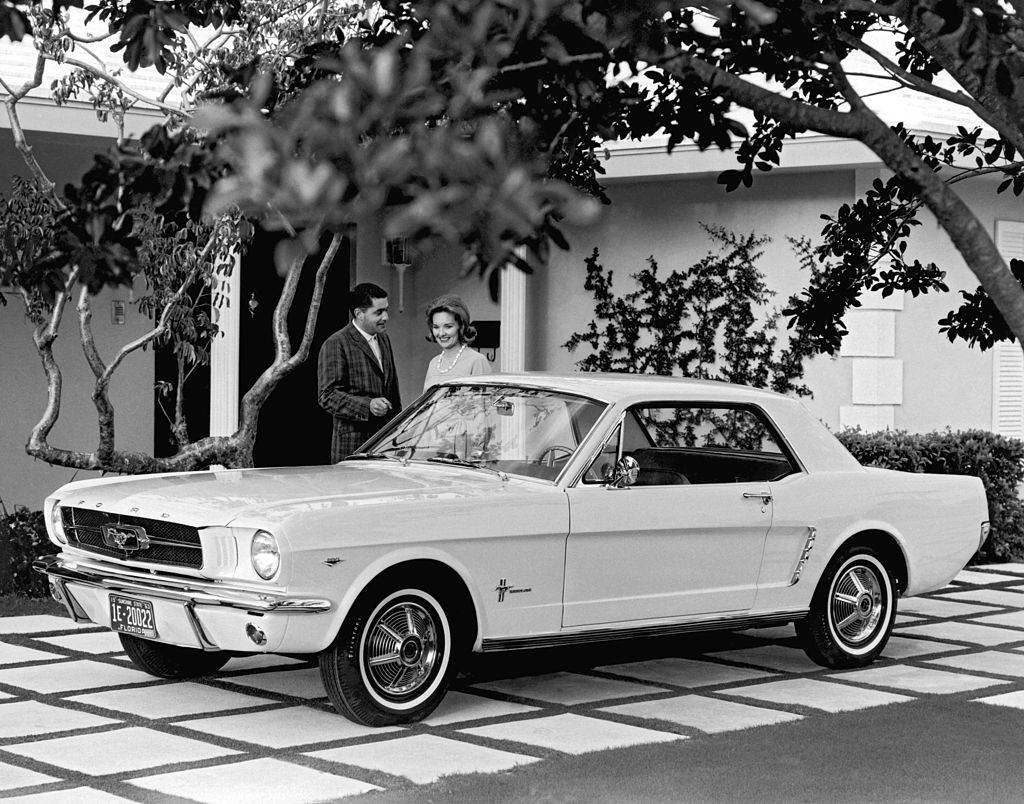
Known for its affordability, sporty character and extensive customization, the Mustang has been a game changer when it comes to American muscle cars. Ford sold 559,500 Mustangs in 1965, for a total of over ten million as of 2019. One of the Mustang's biggest selling points has always been its customizability and upgrades available from the factory.
1964 - Ford GT40 debut at Le Mans
A year after failing to buy Ferrari, Ford Motor Company brought its "Ferrari Fighter" GT40 to Le Mans. The name of the car comes from the Grand Touring (GT) and 40 comes from the height of the car at 40 inches.
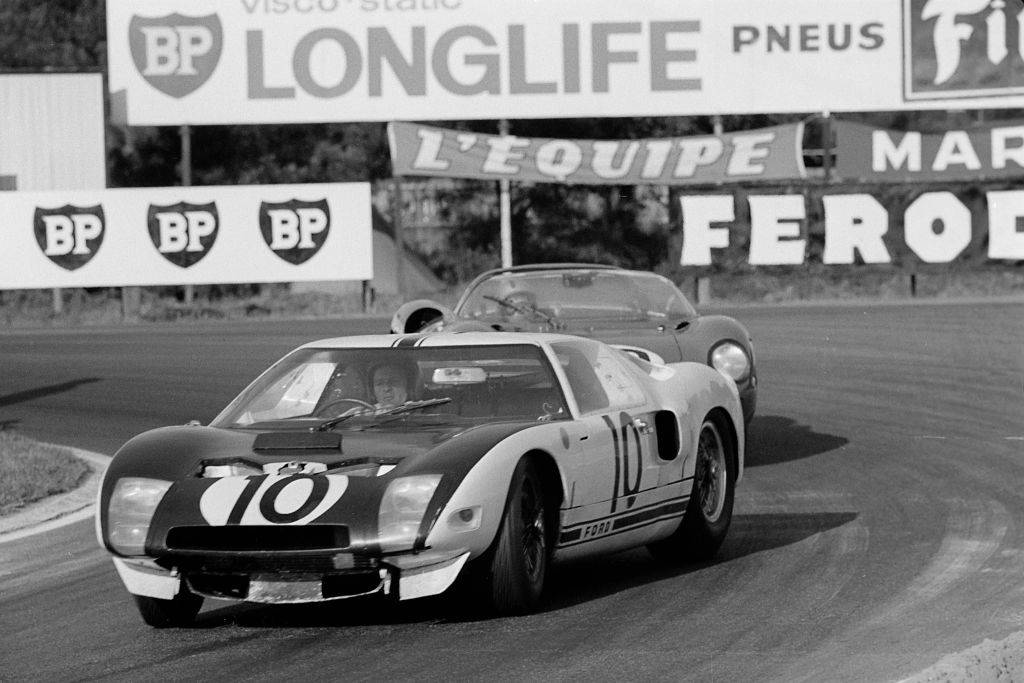
Powered by an 289-cubic-inch V8 engine, the same one used in the Mustang, the GT40 could hit 200 km/h at Le Mans. Problems with the new car, instability and reliability issues took their toll during the 1964 Le Mans race and none of the three cars entered finished, giving Ferrari another overall Le Mans victory.
1965 - "Ford and the Race to the Moon"
In 1961, Ford Motor Company acquired electronics manufacturer PHILCO, creating PHILCO-Ford. The company supplied Ford with car and truck radios and manufactured computer systems, televisions, washing machines, and a wide variety of other consumer electronics. In the 1960s, NASA awarded a contract to PHILCO-Ford to build tracking systems for Project Mercury space missions.

PHILCO-Ford was also responsible for the design, manufacture and installation of Mission Control at the NASA Space Center in Houston, Texas. Control consoles were used for the Gemini, Apollo, Skylab and Space Shuttle lunar missions until 1998. Today they are preserved by NASA due to their historical significance.
1966 - Ford wins at Le Mans
After two heartbreaking years of a motorsports program designed to beat Ferrari at the 24 Hours of Le Mans, Ford finally released the MKII GT1966 in 40. Ford increased the number of participants in the race by taking part in the race with eight cars. Three from Shelby American, three from Holman Moody and two from British Alan Mann Racing, development partner of the program. In addition, five private teams raced the MKI GT40, giving Ford thirteen cars in the race.
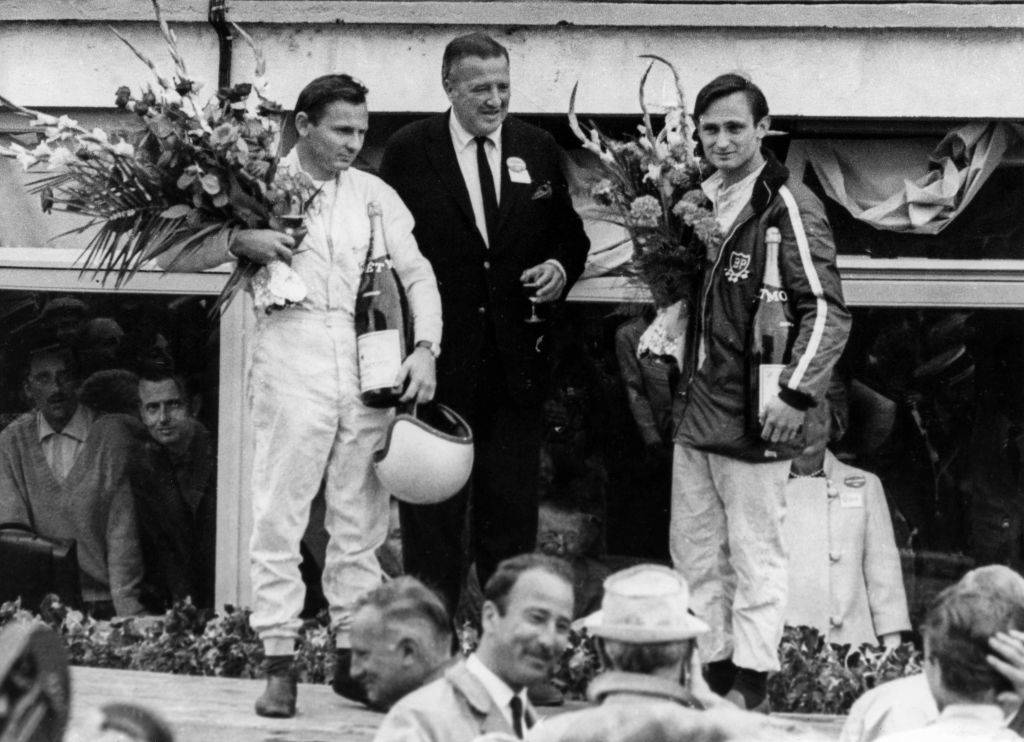
The MKII GT40 was powered by a large 427 cubic inch V8 engine with 485 horsepower. Ford won the race, finishing 1-2-3, while car number 2 won overall. It was to be the first of four consecutive Le Mans victories.
1978 - "The Incredible Exploding Pinto"
The Ford Pinto, a name that will live in infamy for all eternity, was a compact car designed to counter the growing popularity of imported compact cars from Volkswagen, Toyota and Datsun. It debuted in 1971 and was produced until 1980.

Poor fuel system design has resulted in several incidents in which the fuel tank could rupture in a rear impact and catch fire or explode. Several high-profile incidents have led to lawsuits, criminal prosecutions and one of the largest car recalls in history. The publicity and costs nearly ruined Ford's reputation as a car manufacturer.
1985 - Ford Taurus changes the industry
Introduced in 1985 as a 1986 model year, the Ford Taurus was a game changer for American-made sedans. Its rounded shape stood out from the competition, earning it the nickname "jelly bean" and ushering in an era of quality focus at Ford.
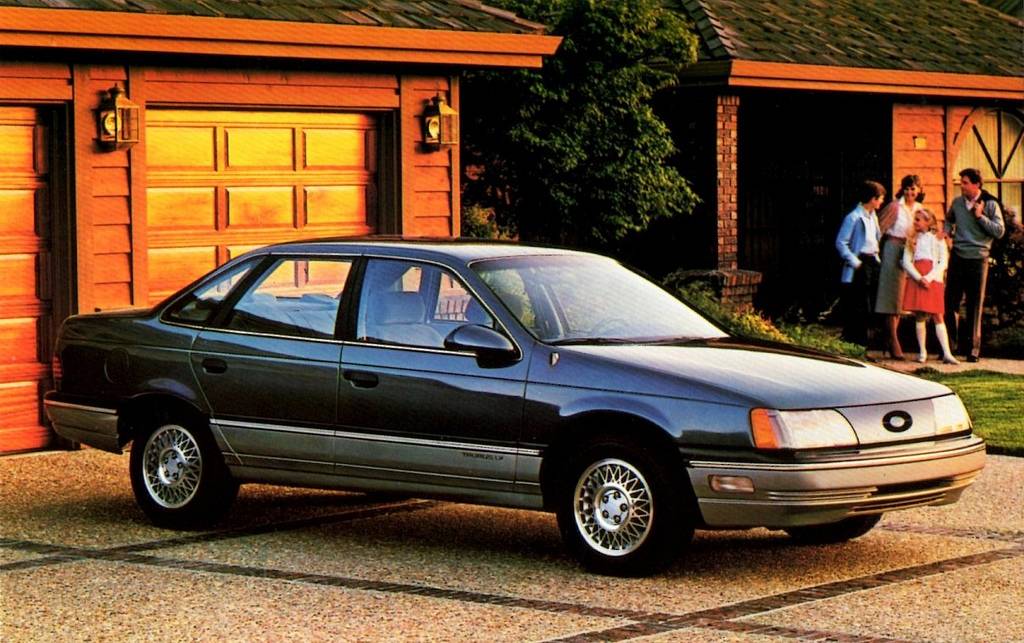
The aerodynamic design made the Taurus more fuel efficient and ultimately led to a revolution in American automotive design. Both General Motors and Chrysler quickly developed aerodynamic vehicles to capitalize on the success of the Taurus. In its first year of production, Ford sold over 200,000 Taurus vehicles and the car was named Motor Trend's 1986 Car of the Year.
1987 - Ford buys Aston-Martin Lagonda
In September 1987, Ford Motor Company announced the purchase of the well-known British automaker Aston-Martin. The purchase of the company likely saved Aston-Martin from bankruptcy and added a luxury sports car company to Ford's portfolio. Ford began to modernize the production of Aston-Martin cars, opening a new plant in 1994.

Prior to Ford's ownership, Aston-Martins were mostly hand built, including the bodywork. This increased costs and reduced the number of cars that could be produced. Ford owned Aston-Martin until 2007, when it sold the company to the Prodrive group, led by a British motorsports and cutting-edge engineering company.
1989 - Ford buys Jaguar
In late 1989, Ford Motors began buying up Jaguar stock and by 1999 was fully integrated into the Ford business. The Ford Jaguar purchase, along with Aston Martin, was merged with the Premier Automotive Group, which was supposed to provide Ford with high-end luxury. cars, while the brands received upgrades and production assistance from Ford.
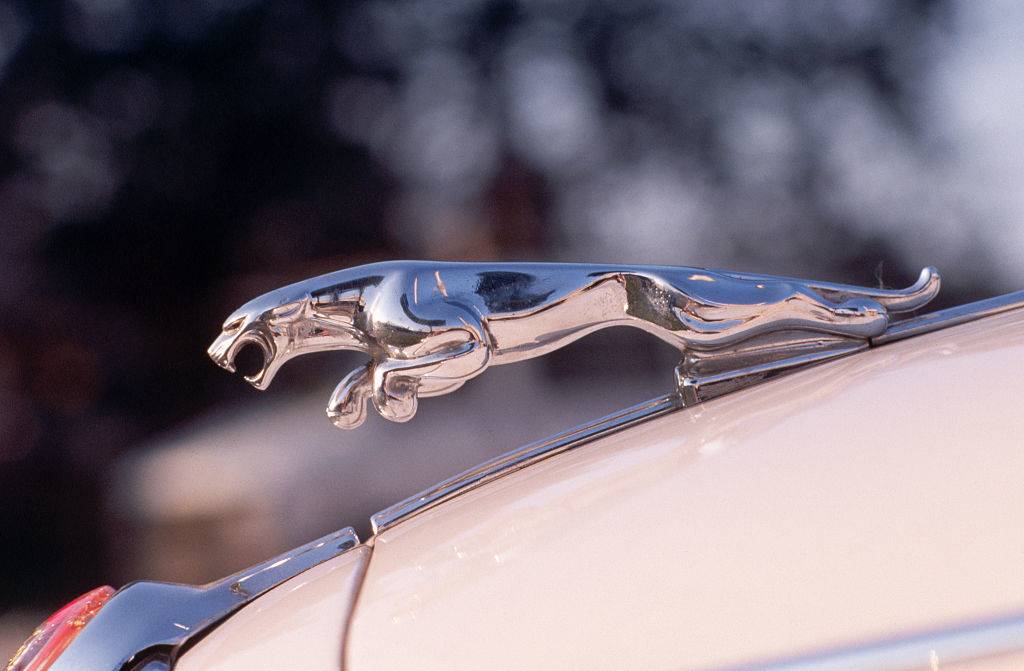
Driven by Ford, the Jaguar never made a profit, as models introduced such as the S-Type and X-Type were drab and poorly disguised Jaguar-badged Ford sedans. Ford eventually sold Jaguar to Tata Motors in 2008.
1990 - Ford Explorer
The Ford Explorer was an SUV built to compete with the Chevrolet Blazer and Jeep Cherokee. Introduced in 1990 as a 1991 model year, the Explorer was available as two or four doors and was powered by a German made engine. cologne V6. Surprisingly, the Explorer was Ford's first four-door SUV.
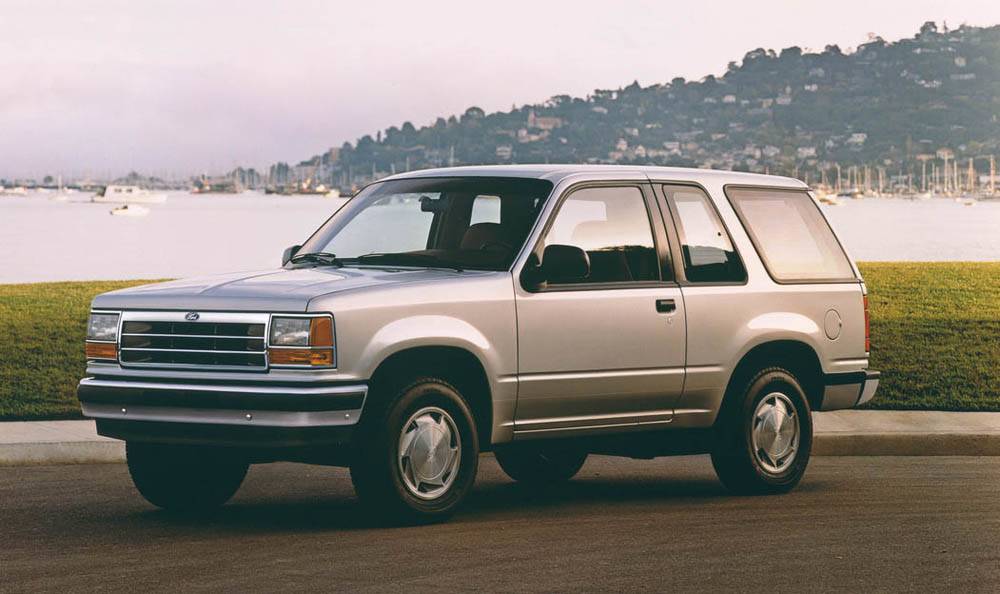
The Explorer is perhaps best known for the Firestone tire controversy in the late 1990s. Insufficient tire pressure recommended by Ford likely led to tire tread separation and a large number of accidents. Firestone was forced to recall 23 million tires after 823 injuries and 271 deaths.
2003 - Ford celebrates 100 years
At 100, Ford Motor Company celebrated its 2003 anniversary. Although Ford has been making cars since 1896, the Ford Motor Company as we know it today was founded in 1903.
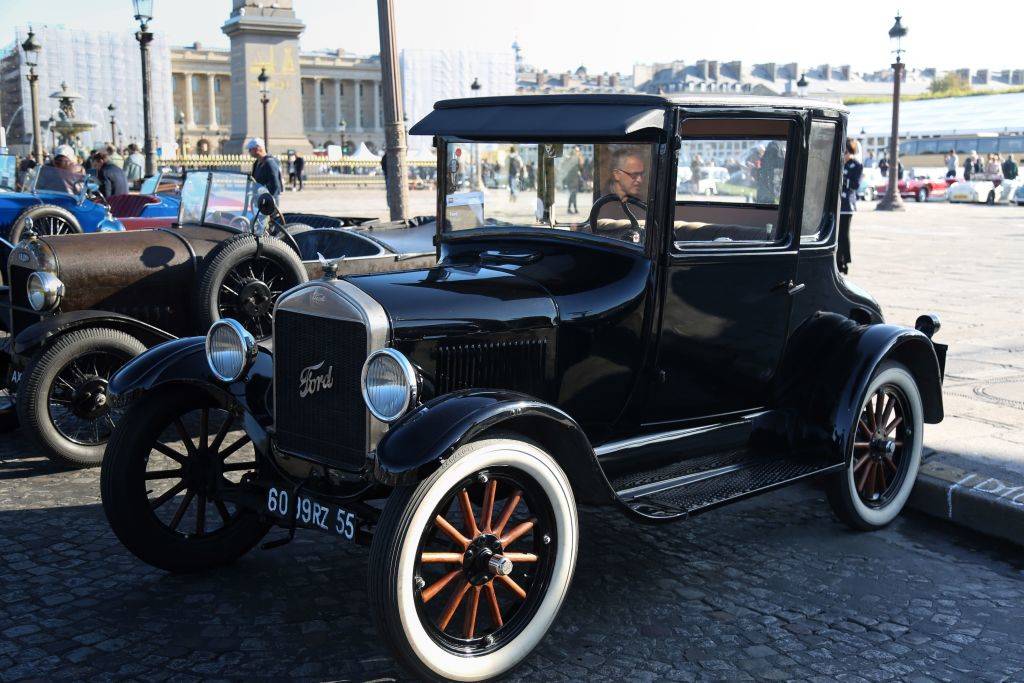
Over its long history, the company has contributed to revolutionizing car ownership, modernizing the assembly line, improving the quality of life for factory workers, helping in two of America's wars, and creating some of the most influential and iconic cars in automotive history. Today, Ford is one of the greatest car manufacturers the world has ever seen.
